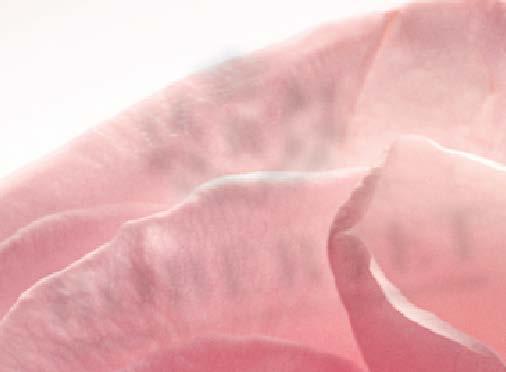
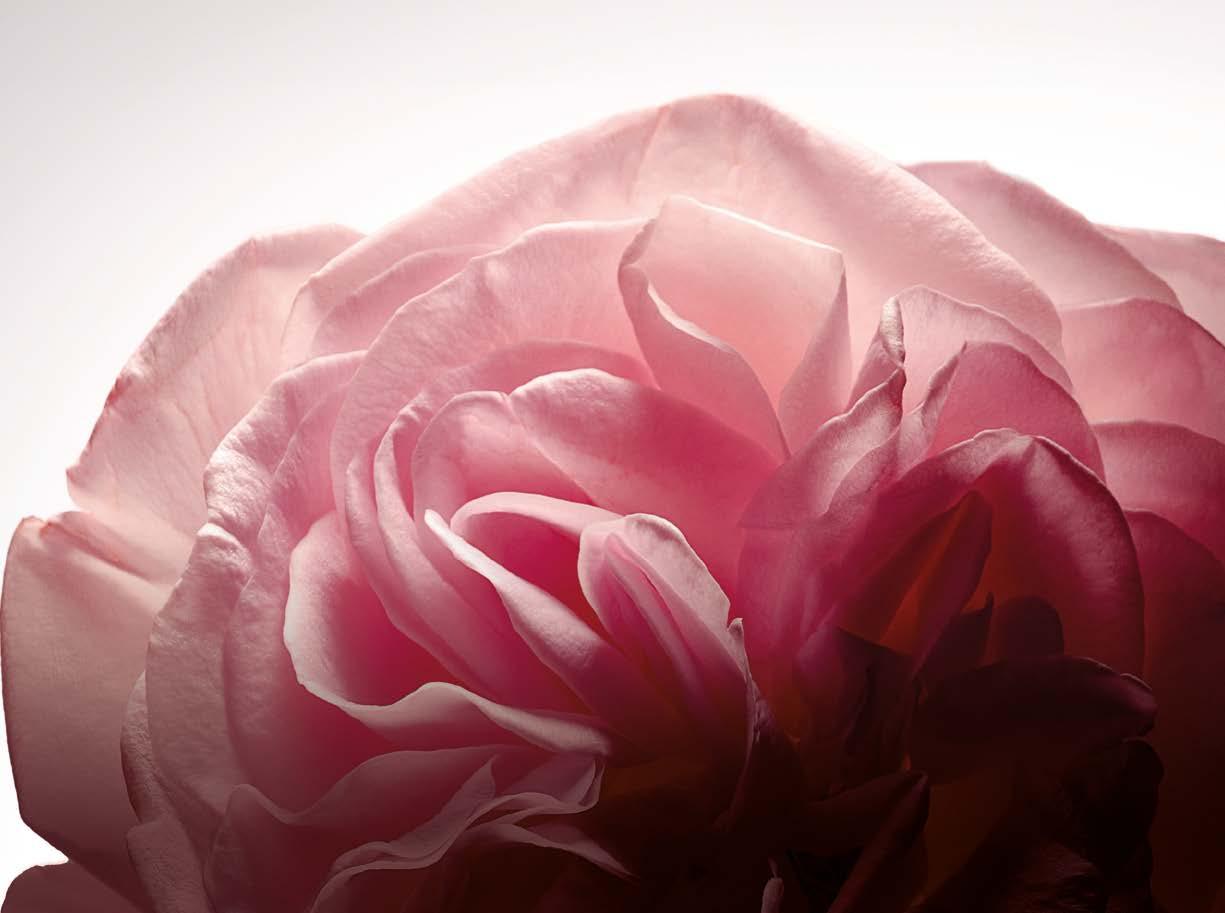
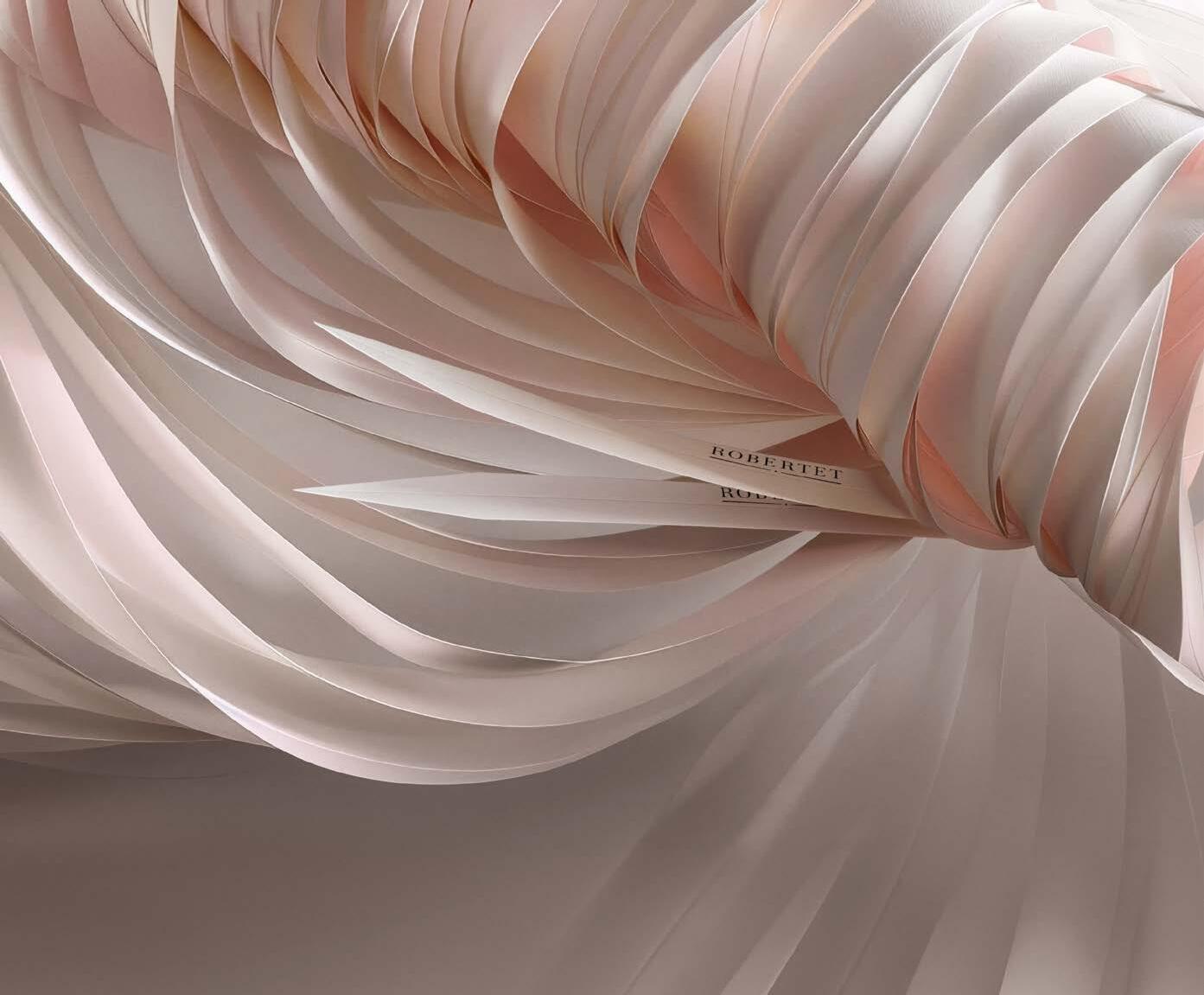




2015年,我和 Jeanne Doré 、 Dominique Brunel 萌生了一个梦 想:创办一本独一无二的杂志,深 入探索气味的世界,以及我们与气 味间千丝万缕的联系。数月之后, 我们正式推出了《 NEZ》 杂志,这 是第一本以多元的表现形式,致力 于嗅觉文化的杂志。创刊号一经推 出,便赢得了大众与专业人士的一 致赞誉。这激励我们不断拓展更多 内容,向更多人展示嗅觉,这一常 被忽略的感官的无限魅力:我们推 出了以原料为专题的自然手册系列; 出版了《香水之书》(中文版由博集 天卷、湖南文艺出版社和中南出版 传媒集团翻译出版);创办了播客平 台;推出了深耕小众香水的国际 杂 志《 Niche by Nez》;并成功举办了 巴黎香水周以及格拉斯香水周这两 大国际盛事,吸引了数千名参观者。
对于《 NEZ》而言,回应中国对气 味世界,尤其是香水领域日益浓厚 的兴趣,是义不容辞的使命。因此, 我们满怀喜悦地与“气味上海”携手, 为您呈现这本中英双语的首期《 Nez in China》。通过编辑团队专家倾力 打造的深度内容——严谨专业又通 俗易懂地——我们为所有对气味充 满好奇的探索者、对香水痴迷不已 的爱好者,以及中国香水行业的专
业从业者,开启一场全新的洞察与 探索之旅。我们每半年与您相约在 “气味上海”香水香氛精品展,深入 探索这一无限丰富的感官文化。这 里汇聚了令人惊叹的创作、丰富悠 久的传统、持续不断的创新,以及 一群充满激情与魅力的追梦者。让 我们一起深呼吸,尽情享受灵感的 海洋!
In 2015, Jeanne Doré, Dominique Brunel and I had a shared dream: to create a brand-new magazine to explore smells and all the different ways we interact with them. A few months later we launched Nez, the first magazine dedicated to olfactory culture in all its many aspects. The debut issue was an immediate hit with the general public and perfumery professionals alike. A success that encouraged us to find more ways for as many people as possible to discover the riveting world of the sense of smell, so often overlooked. Our initiatives include the collection of Naturals Notebooks on raw materials; The Big Book of Perfume (translated and published in China by CS-Booky, Hunan Literature and Art Publishing House, CNS Publishing Media); our podcast platform; Niche by Nez , our interna-
tional magazine focused on independent perfumery; and the organization of two major events attracting thousands of visitors: Paris Perfume Week and Grasse Perfume Week. It would have been unthinkable for Nez to ignore China’s burgeoning interest in the world of smells, particularly fragrances. We are therefore delighted to offer you, in partnership with Notes Shanghai, the very first issue of Nez in China in Mandarin and English. In-depth articles based on high-quality, accessible content created by our teams of expert editorial writers open up a new space devoted to learning and discovery for everyone who is curious about smells, from passionate fragrance enthusiasts to China’s perfumery professionals. A new issue will appear every six months to accompany the Notes Shanghai event and delve into this endlessly enthralling culture made up of breathtaking creations, age-old traditions, constant innovations, and a community of fascinated and fascinating people and organizations. Dive in and let the pages of the magazine fire your imagination!
Mathieu Chévara
Co-founder and Creative Director of Nez, the Olfactory Cultural Movement
Synarome, established in1926and now partofSozio,is aFrenchprod ucerofprem i um fr ag r an ce ing redie nts. Withnear lyacen tur yofexpertise ,wecreateic oni c specialti es li ke Am braro me ,re fined na tu r als,an d innovativefragrancemolecules Committedtoquality andsustainabilit y,S yna r omeholds cer ti fi ca tion s li keISO9 00 1, Ecoc ertCos m os Natur al , and EcoVadi s Si lver, ensuring e thica l sou rcingand afoc us onth e futu re of per f umer y.
Ambrarome™ 是一款超越时代的香原料,自问世以来便大获成功 , 并被用 于多款传奇香水中。它于 1926年 作为龙涎香的替代品诞生,拥有极致的温 暖感 、 矿物感以及琥珀乳香调——不仅如此!它还有很强的动物感和皮革 感, 加入 Synarome 至今30多年来,这款原料依旧不断给我带来惊喜同时 它的生产过程也极为神奇:Synarome 选择一种植物基原料,将其提炼成 纯度高达 99.9% 的天然成分。我很喜欢 Ambrarome™,将它用在了我所 有配方中,它的香调是跨越时代的,同时因为其定香剂特性,它能赋予香 水持久的魅力,即使微量使用,Ambrarome™也能拥有强大的表现力,帮 我“锁住”配方!
Amb rarom e is a timelessing redie nt th at achi evedgreat su cc ess upo ni ts la un ch an dhas si nce bee nfeaturedin le g en darype rfume s. Created in1926 as areplacementforambergris,this specialty ingredient sharesit si mp res si vewa rm,mi nera l, and ba l samic ambernote—but that’snota ll !Itsp ower fu l an i ma l ic a nd leat he ryfacetscon ti nueto as to nishme after30ye ars. I’ mmes me ri zedby its pro du c ti onproce ss : Sy na ro me tr ans fo rms a pla nt -b ased pr oduct intoa 99. 9%na tu ral ingred ient.
Iloveit bec a use it’sanagel es snoteIu se inallmyc ompo s it ionsto provi dealo ng-l a sti nge ffec ttha nk stoits fi xativecharacter.Evenin tracea mou n ts , Amb rarom e ™ ma kes ap owerfu limpacta nd hel ps to lo ck myfor mu l as !

™ Isabelle Fritsch
Synarome 调香师 Perfumer at Synarome
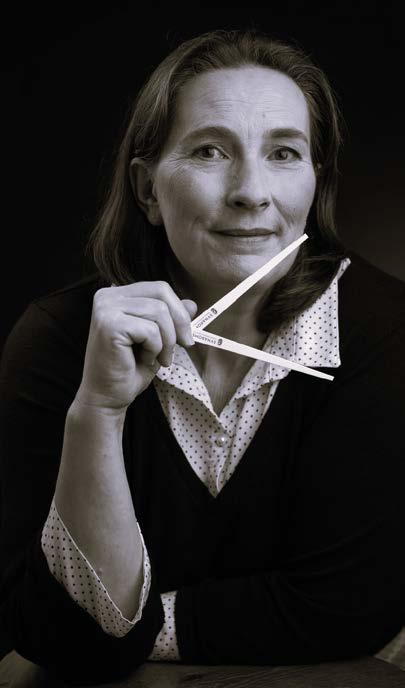
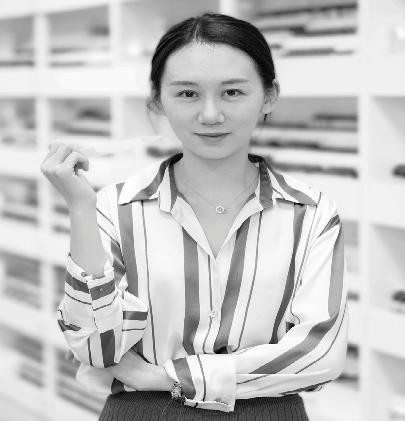

So zio, fr ag r an ce house , has b ee ne mbodyingth e exc ell enceofFr enchperfumer ythrough tai lorm ad efr ag r an ces sin ce 1758. A pion eerofper fu m er y c eleb rat ed for it s richheritageand excep tiona l craf ts m an s hip ,So zio com bin es uniq uesav oi r-f ai re with tr aditionandinn ova tion tocreatecrea ti ve an d res pon s ible com positions p er f ec tlysuitedto th e ne eds of its cu st om er s a round th eworld .
AmbraromeTM 是我调香台中最迷人、最有力的原料之一。它巧妙平衡了精致与细腻,以优 雅升华白花,以神秘点缀乌木,以温暖的深度丰富皮革。仅需一滴,便能优化质感、调和香气, 并赋予香水持久的留香。这个世界无疑需要更多的 Ambrarome™!在 Sozio 与 Synarome 的紧密合作中,我有幸将 Synarome 的标志性原料不受限制地使用到我们的创作中,完美呼 应 Sozio 的嗅觉愿景——高端、精致、无可替代。
Ambrarom e is one o fthem os t f as ci nat ing a nd p ower fulingred ien ts inmyp er f um ery palette.It balances sophistication withdelicacy, enhancing white florals withelegance, oud w ith mystery, andle a the rw ith warmde p th. A singl edropre fines textu re, unifi es bl e nds , an d en sure s rem ar k able lo ng evity.T he wo rl dc ou l d cer ta inlyuse m oreAmbrarom e Thanks to the synergybetween Sozio and Synarome, Ihave the privilege of incorporating unli mit ed lyS yna r om e’sem blem a tic e xp e rtise into ou rcrea tion,whichper f ect ly c ompleme nts S ozio’solfactivev is ion premi um ,exqu is ite a n d irreplac ab le.
™!

RaphaelaJian Perfumer at Sozio
Sozio 调香师
香 P.7
香水的
Mathieu Chévara P.9
Guillaume Tesson P.10
的 P.12
Guillaume Tesson P.14
香水中的
Jeanne Doré P.22
香
Guillaume Tesson P.24
Béatrice Boisserie P.29
Patrice Revillard P.36 香水 P.41
Guillaume Tesson P.42
Jessica Mignot P.48
Alexis Toublanc
Éléonore de Bonneval
Patrice Revillard
P.7
The secret to the greatest fragrances by Mathieu Chévara P.9
ANATOMY
Magnolia by Guillaume Tesson P.10
KEY FACTS
Magnolia in China P.12
365 days in the magnolia plantations by Guillaume Tesson P.14
Magnolia in fragrances by Jeanne Doré P.22
A PERFUMER’S ENCOUNTER WITH MAGNOLIA Carlos Benaim by Guillaume Tesson P.24
In Wadi Dawkah, the Omani Grasse by Béatrice Boisserie P.29
THE HERBARIUM Anise by Patrice Revillard P.36
P.41
THE ART OF STAYING YOURSELF The Different Company by Guillaume Tesson P.42
Rice in bottles by Jessica Mignot P.48
The perfumer’s profession by Alexis Toublanc P.50
Questions and preconceptions by Patrice Revillard P.54





Subversive scents inspired by the books we read beneath the sheets. [ @jouissanceparfums / jouissanceparfums.com ]


木兰 MAGNOLIA P.10
瓦迪道卡,
阿曼的格拉斯 IN WADI DAWKAH, THE OMANI GRASSE P.29
植物档案
茴香 THE HERBARIUM ANISE P.36
香 原料
Perfume Gesture #1: The Formula


作者 / by: Mathieu Chévara
香水历史上的伟大成就绝非偶然。
有人或许会简单地认为,这仅是一 位灵感迸发的调香师捕捉到了时代 的脉搏,但事实上,其中往往有着 多方面因素的综合作用,远比想象 中的复杂。
一款好的香水,有时得以成为一款 伟大的香水,是一道微妙的方程式, 而调香师绝非唯一的指挥者。在他 /她身边,有许多职业共同参与, 共同雕琢香水的品质——从精心调 配香精的生产者开始,他们在世界 各地日复一日地陪伴大自然,创造 嗅觉的小小奇迹。
国际香精香料公司 ( IFF )是一家 领先的国际香精香料创作公司,旗 下拥有众多顶级调香师,始终致力 于为挑剔的调香师们提供最优质的 原料,这些原料是农民、科学家与 自然之间默契合作的结晶。在每一 期 杂志中,通过我们为您推荐的植
物与花卉,您将看到一条汇聚了人 才、创新与创意的产业链。从太平 洋小岛的檀香到格拉斯千叶玫瑰的 生产过程,从巴黎、纽约、圣保罗 到如今上海的创意中心,从调香大 师的箴言到年轻创意人才的精湛技 艺,香水界的万籁都在这里谱写最 美的篇章。
The success of the most remarkable fragrances that have lit up the history of perfumery owes nothing to chance. Tempting as it may be to think that an inspired perfumer simply managed to capture the spirit of the times, the reality is almost always far more complex, a synergy of various factors.
A good fragrance, which sometimes becomes a great fragrance, is a subtle equation where the perfumer is very far from being alone on stage. Perfumers benefit from an extensive supporting cast, all contributing to the quality of
the fragrance. Starting with the people who produce the skillfully composed essences that end up in your bottle, and who work every day and throughout the world to encourage the little olfactory miracles that nature offers us.
IFF, a leading international composition house that is home to some of the world’s top perfumers, has always been determined to ensure that its creators have access to the finest ingredients, the fruit of an equitable collaboration between farmers, scientists and nature. The plants and flowers we explore in each issue of the magazine will take you on a journey to discover a host of talented people, innovations and creations. From sandalwood production on a small island in the Pacific Ocean and centifolia roses from the Grasse region to the creative hubs of Paris, New York, São Paulo and now Shanghai, from the wise words of a master perfumer to the careful movements of rising-star talent, all the actors in the perfumery world play their parts to perfection in the pages of this magazine.
/ by: Guillaume Tesson
/ illustrations:
Amélie Fontaine

Magnolia is a genus belonging to the Magnoliaceae family, with a hundred species of flowering trees and shrubs, including Michelia alba, used in perfumery.

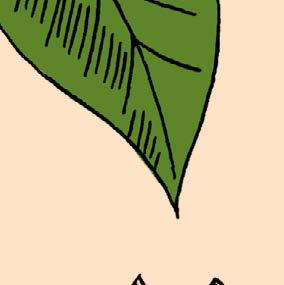


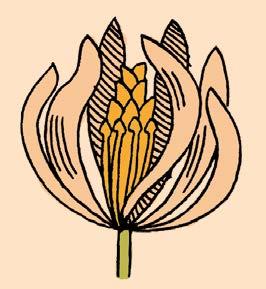
Michelia x alba (DC)
FAMILY
Magnoliaceae
Indonesia, Thailand and Malaysia
PRINCIPAL COMPONENTS
White champaca
White sandalwood
White jade orchid tree
ETYMOLOGY
magnolia
Charles Plumier
Pierre Magnol
From the modern Latin magnolia, a name coined in 1703 by Charles Plumier, a French botanist, as a tribute to the botanist Pierre Magnol who introduced the notion of family in the classification of plants.
A tree with evergreen leaves that can reach up to 30 meters in its natural state, and approximately 1.50 meters once pruned.
Linalool
Ethyl 2-methylbutanoate
Methyl 2-methylbutanoate
COMPONENT WITH THE HIGHEST OLFACTORY IMPACT
Linalool
Height of the tree when pruned (m)
Average size of a plot (ha) 1.5
1,200 4
height of the tree if not pruned (m)
Maximum height of the tree if not pruned (m)
for the fragrance industry (t) 30
Annual production of flowers per hectare (t)
Daily quantity of flowers and leaves picked (kg)
6 a.m. – 12 p.m. Hours for harvesting

/ by: Guillaume Tesson



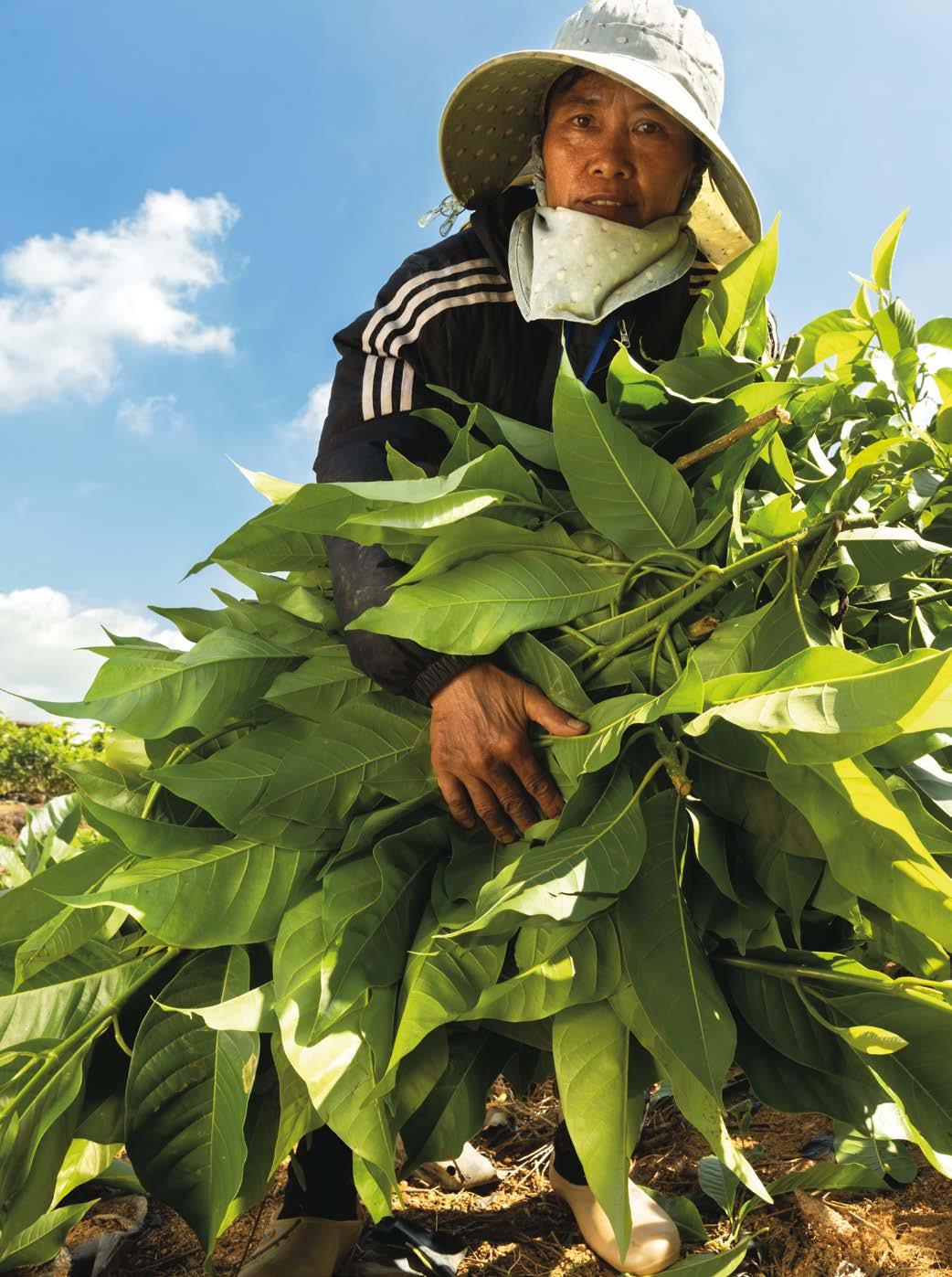
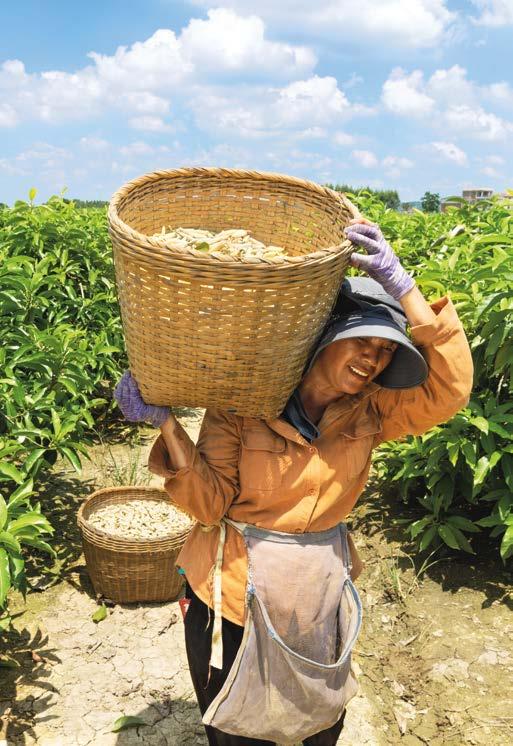
In China, the magnolia intended for the fragrance industry is mainly grown around Hengzhou and Lingshan in the Guangxi region, in the southeast of the country, on the Tropic of Cancer, near the Xi River. The tropical climate and the average temperatures of 25°C found in these regions are ideal for the cultivation of the tree. Traditionally, magnolia plantations, which peak at an altitude of 350 meters, are located near elds of jasmine sambac. The two owers, once dried, are the most prized to avor tea.
While ornamental magnolias are generally cultivated through cuttings, those reserved for the fragrance industry are grown through grafts. To thrive, Michelia alba needs a loose, nutrient-rich soil with a slightly

acidic pH. In their natural state, the trees can easily reach a height of 10 to 15 meters. To keep them at shoulder height and make the harvest easier, farmers practice the girdling technique, also known as ring-barking, which consists of removing the bark from all or part of the trunk’s circumference. The advantage for the farmer is twofold: The tree, whose growth is constrained, stays small (between 1 and 1.80 meters), and the owers bene t from more nutrients. The use of fertilizers and compost is indispensable, especially as the tree begins to grow. Water and fertilizers are supplied by a drip irrigation system that goes up and down the plantations. Magnolias have few pests. The Aspongopus chinensis stink bug, which feeds on its sap and can measure nearly 3 centimeters, is the tree’s main threat. To protect it, farmers use an
insecticide respectful of the environment and of human beings. A magnolia tree yields a satisfactory quantity of owers for about 15 years. After each harvest, the trees are pruned, and the product of this pruning is used for producing magnolia leaf essential oil.
As the tea industry is the main buyer of fresh magnolia owers, it is in the interest of producers to regulate the owering to spread it over several months, in order to always have materials on hand. If all the owers reached their maturity at the same time, there would be a labor shortage, and prices would skyrocket.
Daily manual harvesting therefore stimulates owering, which lasts from April to November, with a peak in July and August. But it is in spring (60% to 70% of the annual volume) and fall

(30% to 40%) that the producers of essential oils can buy the owers at the most interesting cost – prices being higher in summer because of a stronger demand.
The harvest is carried out manually, in the morning, between 6a.m. and 12 p.m., by pickers who can collect 200kilos of owers daily. Once harvested, the owers are laid out for about 12hours in the open air, spread out on burlap and protected from the sun with a veil, so that they will expel their excess humidity, continue to open and therefore release more fragrance during their distillation. After the harvest, the owers and leaves are transported to partner distilleries to be treated. Less than 24hours after the harvest, steam distillation is carried out.
LMR buys its magnolia essential oil from a single supplier (who controls and
harmonizes, if needed, the result of the distillation), who works with four farmers supervising 33 hectares of plantations. To control production, two certifications have been implemented. The first, still waiting to be certified, complies with the criteria of the Union for Ethical BioTrade (UEBT), guaranteeing a raw materials supply which contributes to “a world where people and biodiversity thrive.” This label covers a set of ethical practices, from soil maintenance to commercialization and the well-being of employees. The second certification, the Ecocert Fair for Life label, reviewed in November 2024, guarantees, among other things, a fair purchasing price for producers and attests to environmentally-friendly farming practices. Compliance with specifications is verified both by internal controllers and by auditors working for the two organizations.

/ by:
Jeanne Doré
柑橘调 CITRUSY
Magnolia nobile Acqua di Parma 2009
Eau de magnolia Éditions de parfums Frédéric Malle 2014
Reflection Woman Amouage 2006
Un matin d’orage Goutal Paris 2009
Éclat de vert Aerin 2018
Tocade Rochas 1994
Le monde est beau Kenzo 1997
Envy Gucci 1997
果香绿意调 FRUITY GREEN 水生调 AQUATIC
24 Faubourg Hermès 1995
L’Instant Guerlain 2003
果香调 FRUITY 白花香调 WHITE FLOWERS BOUQUET
Jour d’Hermès Hermès 2012 Inflorescence Byredo 2013 Apogée Louis Vuitton 2016
阳光调 SOLAR
麝香玫瑰调 MUSKY ROSE
麝香脂粉调 MUSKY POWDERY
Prodigieux le parfum Nuxe 2012
Mojave Ghost Byredo 2014
In white oral bouquets or as soli ores, magnolia develops its fresh, fruity, lemony facets in feminine classics but also in more con dential contemporary creations.
Le Magnolia de Rosine Les Parfums de Rosine 2018
alba Chloé 2019
Pur Magnolia Cartier 2020
Jumpsuit Yves Saint Laurent 2020 Ibiza Nights Carner Barcelona 2020
filante Louis Vuitton 2021
2022
Gorgeous Magnolia Gucci 2023

2019


Un jardin sur la lagune Hermès 2019
Fragonard 2020
Beautiful Magnolia Estée Lauder 2021
2024
of Me Narciso Rodriguez 2023
2022
2022
Santa
Novella 2023 Nº21 Magnolia Underground Binet-Papillon 2023
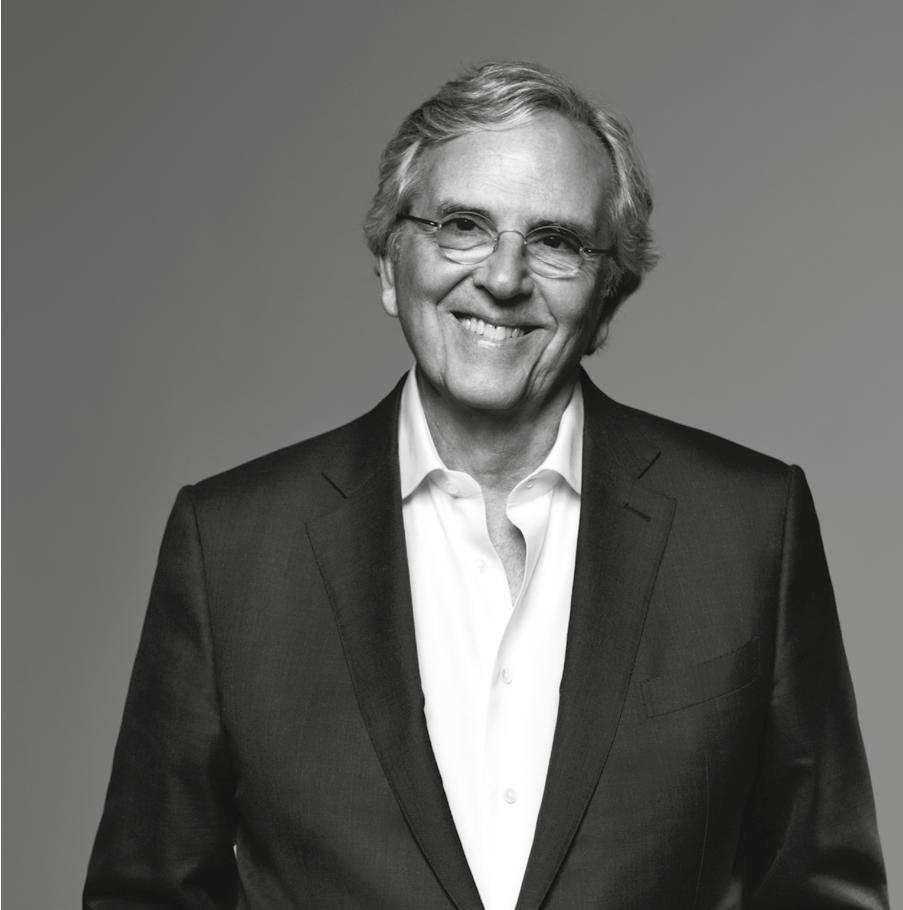

作者 / by: Guillaume Tesson
卡洛斯·贝纳伊姆对香气的热爱源于 他的父亲 一位痴迷于精油提取 的药剂师。自 1976 年以来,这位化 学专业的调香师通过《世界报》上 的一则招聘广告被录用的,开始了 效力IFF的生涯。
定居纽约的 Carlos Benaim 在近 五十年的职业生涯中,创作了多 款国际畅销香水,例如为 Ralph Lauren 打造的 Polo ( 1978 年)以 及为 Calvin Klein 打造的 Eternity for Men ( 1990 年)。他还与团队 合作创作了多款成功作品,例如 与 Dominique Ropion 和 Sophie
Labbé 共同打造的 Givenchy Very Irresistible ( 2003 年),与
Dominique Ropion 、 Domitille
Michalon-Bertier 和 Olivier Polge 共同打造的 Viktor&Rolf
Flowerbomb ( 2005 年),与 Dominique Ropion 和 Olivier Polge 共同打造的 Giorgio Armani Armani Code for Women ( 2006 年),以及与 Anne Flipo 共同打造 的 Yves Saint Laurent Libre( 2019 年)。 2014 年,他在为馥马尔香 水出版社创作的 Eau de Magnolia (木兰沁夏)中演绎了木兰的千面 风采。
在意大利的一见钟情 对我来说,木兰与 70 年代末息 息相关,那时我正在寻找新的花 卉。我最初是在意大利波托菲诺 度假时发现了它。在我下榻的 Splendido 酒店房间窗下种着木 兰,阵阵的木兰花香拂面而来。 我还记得当时危险地探出身子去
摘几朵花,而我的妻子得抓住我 的腿,怕我掉下去!在那次旅行 中,我在多个花园里反复邂逅了 木兰的香气。回到美国后,我在 南方找到了它的踪迹,那里有一 种被称为 “ 南方木兰 ” 的本地品 种,当地也被称为 “ 大花木兰 ” 。 罕见的一面
它丰富的层次感充满趣味,结合 了柑橘和杏子,尾调有些薰衣草 的气息,整体呈现出奶油般的质 感。它有两种用法:既可以作为 主花香调,也可以用于突显前调。
LMR 提炼的木兰原料尤为出色, 能让香气 “ 有光泽 ” 地开场,令 人心动。除了我个人的感受外,化 学家 Braja Mookherjee 通过他的 “Living Flowers” 技术进行的顶空
( headspace )分析,也让我更好地 理解了这种花。
我的创作
香水出版社的 Eau de Magnolia(木 兰沁夏)的创作过程几乎是反其道 而行。其实,它最初并不是一款 香水。 Frédéric Malle 希望推出一 系列灵感来自 Braja Mookherjee 的 “Living Flowers” 技术的香薰蜡 烛。木兰正是我当时研究的对象 之一,而我从未创作过蜡烛,因 此这让我特别感兴趣。最终开发 的香薰蜡烛 Jurassic Flower (清幽 木兰)大获成功, Frédéric 提议 我将配方调整为香水。于是,我 将 “Living Flowers” 技术的木兰 与顶级的柑橘香调结合,打造出 一种清新而现代的花香效果,并 在中调中心融入了细腻的茉莉香 调,尾调以苔藓烘托。在我看来, 我们充分挖掘了木兰的丰富层次。
我觉得这款香水具有强烈的个性, 人们因其别具一格的清新花香感 而喜爱它。
没有木兰的木兰香
Headspace 技术通过捕捉活体花 朵的香气,并尽可能真实地还原 其香味,给予我们帮助并激发我 们的灵感。我们可以利用 Living Flowers 技术,在不使用天然精油 的情况下,创造出一种非常逼真 的合成木兰香。
He owes his taste for scents to his father, a pharmacist fascinated by the extraction of essential oils. Since 1976, the perfumer, who trained as a chemist, has worked for IFF, where he was recruited through a classified ad published in the French daily Le Monde.
Established in New York, Carlos Benaim has composed, in a career spanning nearly 50 years, international hits such as Polo for Ralph Lauren (1978), Eternity for Men for Calvin Klein (1990) and Armani Code for Women with Dominique Ropion and Olivier Polge for Giorgio Armani (2006). He has also co-created successes like Very Irrésistible for Givenchy (2003) with Dominique Ropion and Sophie Labbé, Flowerbomb for Viktor&Rolf (2005) with Dominique Ropion, Domitille Michalon and Olivier Polge, Libre for Yves Saint Laurent (2019) with Anne Flipo, and the list goes on. He has explored the facets of magnolia for Éditions de parfums Frédéric Malle, with Eau de magnolia in 2014.
For me, magnolia is closely associated with a period, the late 1970s, when I was looking for new flowers. I first discovered it during a holiday in Italy, in Portofino. Below my room, at the Hotel Splendido where I stayed, the scent of magnolias rose up to my window. I can see myself, perilously hanging out to pick a few flowers, while my wife held me by the legs to keep me from falling! During that stay, I came across the sillage of magnolias in many gardens. When I got back to the United States, I found its trace in the South thanks to what is called the “Southern magnolia,” a local species also named Magnolia grandiflora.
It combines notes that make it interesting, both lemony and apricoty, with an
almost lavender base and a creamy texture. It can be used two ways: either as the main flower, or to boost a top note. The LMR magnolia does this very well: It adds a “brilliance,” a vibration to the opening. In addition to my own perception, the headspaces carried out by the chemist Braja Mookherjee, with his Living Flowers, allowed me to better understand this flower.
My creation
Eau de magnolia for Éditions de parfums
Frédéric Malle almost started out upside down. Frédéric Malle wanted a range of candles inspired by Braja Mookherjee’s Living Flowers. Magnolia was one of those I was studying at the time and I’d never made candles, so I was especially interested. The candle that was developed, Jurassic Flower, was so successful that Frédéric suggested adapting the formula to turn it into a perfume. So, I associated the Living Flowers Magnolia headspace with very high-end citrus notes, for a fresh, modern floral effect, with jasmine nuances at the center of the composition, supported by moss in the base notes. In my view, we’ve exploited all the facets of magnolia. For me, the creation has a strong personality and people appreciate it for its unusual floral freshness.
A magnolia… without magnolia
Headspaces, by capturing the smells of the living flower and allowing us to reproduce its scent as closely as possible, can help us and inspire us. We can thus recreate a very realistic synthetic magnolia with the Living Flowers, without using the natural essence.




The new fragrance draws inspiration from the bold and innovative aesthetics of the 1970s and 1980s, set against the backdrop of Prague’s striking brutalist architecture. Tuberose – Negroni Accord – Bourbon de Laire Tobacco – Ylang-Ylang
瓦迪道卡: 阿曼的 格拉斯
In Wadi Dawkah, the Omani Grasse

在这片辛巴达航海家曾停靠过 的“幸福阿拉伯”土地上,坐落 着乳香的摇篮:瓦迪道卡(Wadi Dawkah ),位于佐法尔地区中心 的几平方公里土地上,这里是阿曼 苏丹国南部的一片岩石地带,生长 着数千棵乳香树。
佐法尔蓝色的山在远处出现。干 旱,不毛之地,与世隔绝,沿着 直通马斯喀特首的公路一路行驶, 距离塞拉莱 45 分钟的车程的地方, 我们到了瓦迪道卡河谷。
十月的一天下午,一阵清凉的微风 拂过,乳香树的灰白色薄树皮、落 叶和扭曲枝干发出轻微的响声。这 些树的芳香树脂曾与黄金等价。有 传言称,正是在这片约 1400 公顷 的土地上,收获着被誉为最优质的 霍贾里乳香( hojari )。
这片区域与另外三种乳香产地一 起被列入联合国教科文组织世 界遗产名录,为乳香树(学名: Boswellia sacra )提供了理想的气 候条件。在 6 月至 9 月期间,既 躲避了鲁卜哈利沙漠的酷热,又远 离阿拉伯海的潮湿,瓦迪道卡河谷 在季风季节得以避开雨季的侵袭。 在入口处设立了一个苗圃,目前培 育着 4000 株乳香树苗。在瓦迪 道卡河谷的其他地方,也有自然 生长的乳香树,这里的乳香树脂 采集方式依然保持着原始的传统, 这种古老的方法代代相传,延续至 今 有些树可能已有百年以上 的历史。历史上,游牧民族发现了 佐法尔地区的乳香树,用其提取树 脂,然后在市场上换取大米和椰
枣。尽管采集没有系统的管理,但 它却有着严格的规范,因为近三千 年来,这一方式几乎没有改变。
尽管瓦迪道卡河谷因其乳香树见 证了该地区悠久的乳香文化,在 2000 年被联合国教科文组织列入 世界遗产名录,但在随后的二十多 年里,这片区域更多只是象征性 的存在。直到 2022 年,阿曼遗产 与旅游局与香水品牌 Amouage 合 作,决定在该苏丹国重新启动乳香 产业链,这才开始为香水行业提供 乳香原料。如今,瓦迪道卡河谷 ( Wadi Dawkah )的目标是生产一 种高端乳香,一种卓越的香原料, 其真实性可以从树木到树脂滴,再 从树脂到精油全程追溯。这意味着 开发一种真正源自阿曼的乳香,并 有望获得原产地控制命名( AOC ) 认证。迄今为止,已制定了七大核 心里程碑来推动实施这一雄心勃 勃的项目。
In a corner of Arabia Felix, a place certainly visited by Sinbad the Sailor, lies the cradle of frankincense: Wadi Dawkah, a handful of square kilometers at the heart of the Dhofar region, a rocky land in the south of the Sultanate of Oman, where thousands of frankincense trees grow.
The blue Dhofar Mountains rise up in the distance. The ground is arid and bare. This is an isolated place, 45 minutes’ drive from Salalah along the road that leads to Muscat.
It’s an October afternoon and we are in Wadi Dawkah. A cool breeze blows, sparking the song of the paper-thin grey bark of the frankincense trees gently rustling in the wind. A sound telling us that here on this 1,400-hectare site is where Hojari, the highest grade of all the frankincense varieties, is harvested.
The park, one of four UNESCO World Heritage Sites for frankincense, boasts the perfect climate for Boswellia sacra, the botanical name for the frankincense tree: a small knotty-branched deciduous tree whose aromatic resin was for many years traded at the same price as gold. From June to September, during the khareef season, Wadi Dawkah is spared the heavy monsoon rains thanks to its location, protected from the desert heat of the Empty Quarter and far from the humidity of the Arabian Sea. A tree nursery, currently home to 5,000 saplings, has been set up at the entrance to the site. Other trees have grown naturally elsewhere in Wadi Dawkah, and tears of frankincense have been harvested in the wild here for several generations – some trees appear to be over 100 years old. In the past, groups
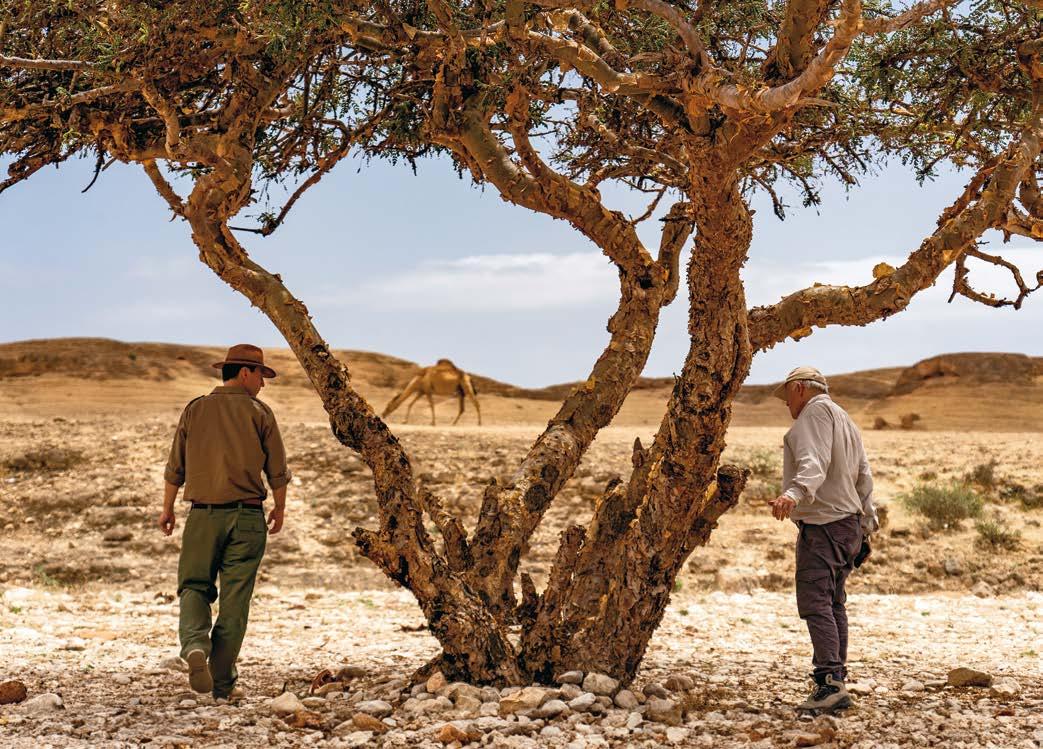
of shepherds who grazed their sheep and goats in the area used to exploit the trees of Dhofar, tapping them for resin they then traded in the market for rice and dates. While barely structured, the harvesting system was highly codi ed, as it remained unaltered for close to 3,000 years.
Although Wadi Dawkah was recognized by UNESCO in 2000 for its trees bearing witness to an ancient heritage of growing frankincense in the region, the site itself remained essentially symbolic for over 20 years. The resin was not exploited for perfumery here until 2022, when the Omani Ministry of Heritage and Tourism decided to rekindle the sultanate’s frankincense industry and partnered with Amouage. This was when the site switched from being purely symbolic to becoming a place where frankincense resin would be transformed into an
exceptional ingredient. Today, the goal at Wadi Dawkah is to produce highquality frankincense whose authenticity can be traced from tree to tear, then from resin to essence. This signals the development of a true Omani frankincense that is likely to bene t from a protected designation of origin. At the time of writing, seven key milestones needed to put this ambitious project into action have been identi ed.
The scale of the project means that frankincense production will once again be central to Omani industry, as tourism is developed.
1 Fencing the site
The rst step was to protect the 15 or so square kilometers of Wadi Dawkah with fencing, essential to guarding the young trees from the appetites of grazing camels. These animals are capable of surviving for extended periods in arid zones simply by eating the leaves of frankincense trees. But the trees’
reproductive system relies on its leaves. Without leaves there can be no owers or seeds, which in turn poses a threat to the survival of the species.
2 Forming a team
Rolling out a new management system at the site involved hiring a local team to care for and water the trees. Eight people were hired and then given training in sustainability to ensure traceability of the frankincense produced, a must-have for the industry. During the 1960s and 1970s, the discovery of oil provided more comfortable sources of employment than frankincense harvesting. Today, as the sultanate seeks to pivot away from oil and diversify its economic activities, frankincense may o er a signi cant potential for job creation.
3 Jointly de ning quality standards
As part of the drive to prepare the ground for a responsible industry, a frankincense standard was created based on a combination of scienti c references, input from older members of the local Bedouin community, and the desire of younger people to learn about working with frankincense. Specialists from the Ministry, university researchers, perfume industry professionals and local people were all involved in a collective intelligence process designed to make the most of the site’s potential, working under the experienced eye of consultant Dominique Roques, formerly an ingredient sourcer for the DSM-Firmenich composition house.
4 Fitting the trees with chips
Amouage and the Ministry of Heritage and Tourism are both determined to create the Middle East’s rst smart forest in Oman. Every tree will be tted with a chip that will collect large amounts of data. This means that
every tree will be better understood and treated as a unique individual. The data gathered will include tree height, watering frequency, exact position in the wadi, yield, harvesting dates, etc. QR codes will generate technical information about production, which will then be used to design an e cient and replicable farming method. Other data will be available online to help tourists better understand local biodiversity.
5 Improving watering
Another task is to gain a more detailed understanding of the water requirements of frankincense trees. Prior to 2000, the trees grew wild and self-regulated, bene ting from exceptional climate conditions that produced high-quality resin. The 5,000 or so trees planted since the inscription of Wadi Dawkah on the UNESCO World Heritage List have sometimes been overwatered, with the roots of a number of trees rotting as a result. When Amouage took over the site in September 2022, the irrigation conditions were rede ned, and since April 2023 the frankincense trees have been watered less, with experts trusting the fact that they can doubtlessly manage by themselves. This change in irrigation method should result in larger quantities of resin in March 2024, peak harvest time. The watering infrastructure also had to be upgraded because there were leaks, and several kilometers of pipes were changed. Water was pumped on the site from a depth of 85 meters to meet the site’s needs.
6 Modernizing logistics
The project includes setting in place the best working conditions for site personnel, providing workers with the right tools, and building tourism infrastructure and an on-site
extraction unit. The scale of the project means that frankincense production will once again be central to Omani industry, as tourism is developed and local people are reintegrated into value creation.
There is no reason to think that the site will be error-free. “We can identify errors in planning and execution because of the data collection and transparency. We will learn and improve as we gain greater experience,” explains Matthew Wright, who heads the project for Amouage. The rst trial harvest of frankincense for perfumery began in September 2023. Three full-time employees were hired to manage the trial. The goal? To characterize the olfactory pro le of the frankincense obtained in Wadi Dawkah and determine whether there are di erent qualities of resin on the site. “We haven’t yet tested our harvest due to the low yield,” says Matthew Wright. “But we know that Najdi frankincense tends to have a high alpha-pinene content of over 70%. This high percentage is not in itself a proof of quality, but it distinguishes Omani frankincense from that sourced elsewhere. This frankincense is di erent, and that’s what interests perfumers.”
The production at Wadi Dawkah is aiming for sustainability rather than quantity. The goal is for Oman to become a model of excellence for frankincense, and the wadi a model that can be reproduced throughout the region. The initiative is part of Oman 2040, the broader program designed to diversify resources in the sultanate.


This cultural heritage site was inscribed on the UNESCO World Heritage List in 2000. The poetic name encompasses four extraordinary locations in the Dhofar Valley, a nature reserve in Southern Oman: the remains of the caravan oasis of Shisr (also known as Ubar); the affiliated ports of Khor Rori and Al-Baleed, outstanding examples of medieval fortified settlements, and Wadi Dawkah, home to the world’s largest forest of Boswellia sacra trees. These places all bear witness to an era when the region was a strategic trading crossroads on the Incense Route that stretched from India to Alexandria. The UNESCO World Heritage listing requires the sultanate to take responsibility for site conservation and tree protection. It also opens the door to cultural tourism in Oman centering on frankincense. Thanks to exchanges with Sultan Qaboos University in Muscat, around 40 young Omanis have received tourism and architecture training, giving them the skills to protect and manage the site.
For a long time, it was believed that Boswellia sacra could be neither cultivated nor moved. This reputation led to a monopoly on frankincense in the south of the Arabian Peninsula that lasted for many years. However, experts have recently realized that the roots of the frankincense tree grow horizontally rather than vertically, making the tree easily transferable. Wadi Dawkah will seek to provide sanctuary to frankincense trees affected by pollution, urban expansion and development. Trees will soon be removed and taken to Wadi Dawkah at a rate of 1,000 a year for 15 years. They will be replanted on the site 10 to 15 meters apart, the ideal distance for the trees to flourish.
Some can’t stand its taste. Others can’t get enough of its distinctive aroma. A polarizing plant in the spotlight.
/ by: Patrice
Revillard
/ illustrations: Erwann Terrier
PROFILE
Scientific name
Pimpinella anisum
茴香 茴 茴
Common names

Anise, aniseed
Appearance Herbaceous plant
Family Apiaceae
Origin Eastern Mediterranean Basin, Asia Minor

茴香
anis anisum ánison
Native to the Eastern Mediterranean Basin or to the Western fringe of Asia, it has been prized since antiquity. As its use became more popular, it was gradually acclimatized to all the temperate zones of Europe. It is one of the only spices produced in the West and, as such, it was once a form of trade with the Orient. Its English name comes from the Latin anisum, itself derived from the Ancient Greek name for the plant, ánison. 茴香 香 香

The plant ends its annual or biennial life cycle with an umbel inflorescence composed of tiny white flowers that yield fruit formed of two achenes, each containing a seed. The Apiaceae family (formerly called Umbelliferae) includes over 3,200 plant species. It is one of the most important in perfumery because of the variety of raw materials drawn from it. Carrot, galbanum, dill, lovage, parsley, cumin, caraway, celery, fennel, coriander and angelica are all Apiaceae that delight perfumers, thanks to the various scents of their leaves, seeds or even roots.
Christophe Lavelle, a research scientist at the CNRS specialized in food studies. Anethole can likewise activate receptors responsible for trigeminal sensations –those that make mustard and cinnamon hot. It is also the compound that turns anisic aperitifs white when water is added to them, since it is soluble in ethanol but not in water. Adding it will produce the spontaneous formation of an emulsion composed of micro-drops of anethole dispersed in a blend of water and alcohol, causing the appearance of a milky veil.
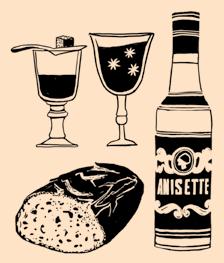
茴香
茴香 pastis
茴香 anisette Pontarlier ouzo raki arak sambuca Galliano 1915 茴香 茴香 1932 Ricard 1936
canistrelli ciambelline all’anice pizzelle rousquilles
This molecule, which gives anise its distinctive smell, has surprising characteristics. “Its sweetening power is considered 13 times higher than that of saccharose,” explains
cornuelles échaudés
The Greeks and Romans added it to wine or bread for its aroma, as well as to benefit from its digestive properties. Throughout the Mediterranean Basin, these uses have yielded many alcoholic beverages, such as pastis, anisette (which is sweeter), Pontarlier, ouzo, raki, arak, sambuca, Galliano or the infamous absinthe. In 1915, the latter was banned in France but not the anise it contained. This led to the rising popularity of anisic liquors like Ricard, created in 1932. Paid holidays, introduced in 1936, contributed to the success of the iconic beverage of Provence throughout France. In baking, anise is used in the French spiced bread known as pain d’épices. But it is common throughout Europe, flavoring biscuits and cakes, including cornuelles in the Charente, échaudés in the Tarn region, Corsican canistrelli, Italian ciambelline all’anice and pizzelle, Catalan rousquilles, and German, Swiss or Alsatian springerle. Because of its sweetness, it is also used to flavor candies, for instance the iconic French bonbons Anis de Flavigny, or to reproduce the aroma of licorice.
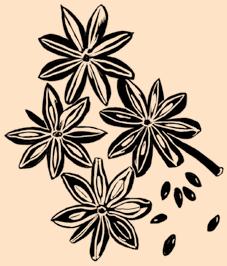
茴香 GREEN ANISE OR STAR ANISE?
茴香 Illicium verum
Thierry Wasser
茴香 茴香
Star anise, the fruit of Illicium verum, a plant from the Schisandraceae family, is often confused with green anise. And no wonder: It has replaced it in the flavor and fragrance industry because it is cheaper – a reversal of the situation in the Middle Ages, when star anise, brought back from China by Marco Polo, was rare and therefore costly. The latter’s scent is “brighter, clean and fluid, less powdery and herbaceous than aniseed, with its bitter fennel-like accents,” explains Thierry Wasser, Guerlain’s in-house perfumer.
香水中的茴香 ANISE IN PERFUME
Roucel Kenzo Air 2003
Brand Guerlain
Perfumer Jacques Guerlain
Launch 1912
Brand 香 L’Artisan parfumeur
Perfumer Olivia Giacobetti
Launch 2006
Anise notes are polarizing and seldom featured in compositions, whether in formulas or in press releases. Sadly, the few projects that showcased it, like Maurice Roucel’s Kenzo Air (2003), were not successes. Its tonalities are found in plants that naturally contain anethole, such as basil and tarragon, two aromatic materials popular in masculine fragrances. It is also the constitutive element of the scent of licorice and cherries.
Far from being downplayed, the anisic accents of hawthorn and heliotropin, used for their almondy facets, are underlined here by star anise essential oil.
The Green Fairy distills all its addictiveness in a woody aromatic scent that plays on the cool-hot effects of an icy shot of mint and anise and the intoxicating warmth of fir balsam and patchouli.
Brand Lolita Lempicka
Perfumer Annick Menardo
Launch 1997 调香
Brand By Kilian
Perfumer Mathieu Nardin
Launch 2021
Angel
In this gourmand of reference, a younger sister of Angel, anisic notes are used to shape a sweet licorice, which bolsters the almondy facets of a cherry accord.
A contrasted composition in which absinthe, green anise and star anise offer a very anisic start, which gradually melds into licorice absolute, yielding a head-turning woody-ambery liqueur.
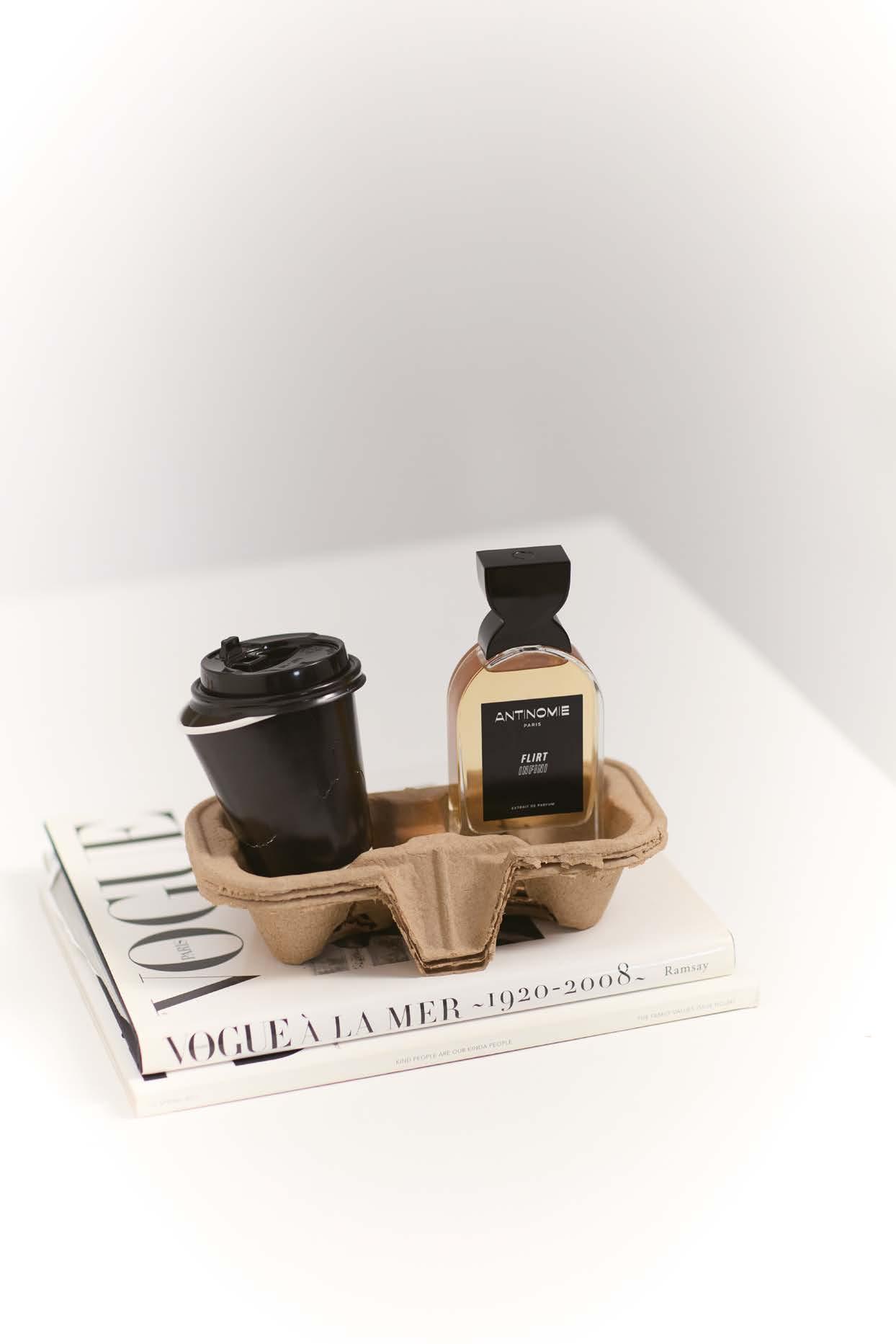

AFFINESSENCE爱幽香
来自法国的沙龙香品牌,追求与香料共鸣 永远忠于香料的自我表达,用气味诠释直达人心的旋律 欢迎来到气味上海B14展台现场觅香 淘宝/天猫搜索:AFFINESSENCE爱幽香旗舰店 https://affinessence.tmall.com/


别样公司:
忠于自我的艺术 THE DIFFERENT COMPANY
P.42
香水瓶中的大米 RICE IN BOTTLES P.48
调香师 的不同职业 THE PERFUMER’S PROFESSION
P.50
疑问与成见 QUESTIONS AND PRECONCEPTIONS
P.54

作者 / by: Guillaume Tesson 摄影 / photos: Romain Bassenne
与其名称所暗示的不同,别样公 司( The Different Company ) 实则是一家法国的企业。二十年 来,品牌总裁兼艺术总监吕克· 加布里埃尔( Luc Gabriel )引领 着这家独立香水品牌的发展。该 品牌早在“ 小众香水”一词尚未 流行之前就问世了。
吕克 · 加布里埃尔回忆道, “ 在以 前那个年代,对于大众来说,香 水的形象就和 90 年代的一则电视 广告一样:一声 ‘ 自私鬼 ’ 的呼喊 声伴随着砰然关闭的豪华酒店百 叶窗。 可以说,当时并没有明星 调香师的概念,而 ‘ 小众 ’ 一词也 尚未与香水行业产生联系。在那 个时代,非典型品牌屈指可数, 如蒂普提克、古特尔、阿蒂仙之香、 芦丹氏等。 ”
2000 年,D e Baschmakoff 设计师 与表兄 Jean-Claude Ellena 携手, 创立了别样公司 The Different Company ,为独立香水品牌领域 注入了一股新的力量。 Thierry de Baschmakoff 设计了一款独具匠心
的三层盖香水瓶,而 Jean-Claude Ellena 则精心调制了三款香水: 桂花( Osmanthus )、木恋鸢尾 ( Bois d’iris ) 与椒香红琉( Rose poivrée )。Luc Gabriel 对此评价道: “ 桂花的灵感源于亚洲广受青睐却 在西方鲜为人知的花朵。其细腻 而看似简约的特质,标志着一款 革新之作的诞生。木恋鸢尾则以 过量的香根鸢尾为核心,呈现出 如历经数世纪岁月洗礼的教堂长 椅般柔滑细腻的质感。而椒香红 琉则是用动物香调重新诠释玫瑰, 以麝猫香为尾调,赋予其深邃而 野性的气息。 ” 品牌所倡导的 “ 别 样 ” 在于凸显珍稀原料的特质, 或通过添加超量的原料,带来出 人意料的感官体验,或以别具一 格的手法重新演绎。每一次创作 皆力求以鲜明而坚定的笔触,书 写其独特的美学语言。
2004 年, Jean-Claude Ellena 告 别 别样公司,转投爱马仕麾下。 与此同时,出身于咨询与在线金 融领域的 Luc Gabriel 萌生了告别 职场、执掌一家企业的念头,并
期望在其中寻得一份纯粹的乐趣。 当他得知别样公司的存在时,顿 感此举恰逢其时,仿佛是一种冥 冥之中的召唤。他回忆起自己年 少时,放学后身着短裤,在母亲 位于昂吉安莱班经营的香水精品 店中流连探索的时光。青年时期, 他曾倾心于迪奥的清新之水、圣 罗兰的科诺诗、娇兰的手帕先生, 甚至跨越性别的界限,沉醉于香 奈儿 19 号。与自身经历深度契合, Luc Gabriel 成为别样公司的控股 股东,正式掌舵这一独立香水品 牌。该品牌恰与馥马尔出版社同 月问世,成为新兴高端香氛市场 中的一股独特力量。为了接棒短 暂任职的首席调香师,品牌邀请 了多位杰出的香水创作者加盟, 其中首位便是 Jean-Claude Ellena 的女儿 Céline Ellena 。自此, 别 样公司 The Different Company 迈 入全新发展阶段。
品牌在法国的发展较为缓慢,而 在海外市场却颇具优势,其中中 东和亚洲已成为品牌的两大核心 市场。与此同时,香水界涌现出
Maison Francis Kurkdjian 、 Le Labo 等才华横溢的品牌,而 2014-2015 年间,大型集团(如欧 莱雅,雅诗兰黛)掀起的并购潮, 亦在行业内引发深远影响。 “ 我选择了坚守创作自由与独立, 同时与 Bertrand Duchaufour 、 Christine Nagel 以及 Émilie Coppermann 保持直接而紧密的 交流。 ” Émilie Coppermann 现效 力于 Symrise ,她为品牌打造了畅 销之作罪女( Majaïna Sin )。她阐 述道:“ 我试图通过这款香水向马 达加斯加致敬,用来自该岛的原 料,如肉桂与生姜,包裹浓郁的 香草 ” 。这款配方融合了苦橙与香 柠檬,并列入了 2012 年诞生的 “Esprit Cologne” 系列。该系列打 破了经典古龙水(以柑橘与芳香 植物为主)的传统框架,时而将 这些元素置于核心,时而赋予它 们更为飘渺的次要角色。为了吸 引新一代消费者,这一系列的香 水采用了鲜明的色彩表达。例如, 黎明之舞( Dance of The Dawn ) 以紫红色调为灵感,前调以橘子 开场,随后是柔和而清新的广藿 香,包裹着粉红胡椒与浮木香调, 最终以令人上瘾的果香基调收尾。
Émilie Coppermann 回忆道:“ 在 与 Luc 的合作中,很难用传统的 ‘ 简报 ’ 来形容。对于 ‘ 黎明之舞 ’ 这个项目,他只提出了一个核心 要求:以广藿香为主调创作一款 香水。除此之外,他给予了我们 极大的信任和自由,鼓励我们大 胆尝试,探索各种可能性。 ” 对话是关键。艺术总监 Luc Gabriel 因人而异,能灵活适应每 位调香师的创作节奏与表达方式。
他尊重 Bertrand Duchaufour 独特 的工作方式 ——“ 他往往在两次试 香之间,会隐居三个月 ” ;他同样 理解 Christine Nagel 以色彩诠释
气味的感性语言。 “ 在构思磁性夜 晚 Une Nuit Magnétique 时,我们 以颜色和嗅觉形态进行交流 蓝色或红色、圆形或方形。她的 助手对此颇感疑惑,而我们却彼 此契合,凭借着一套共通的语言 达成默契。 ”
如今, Luc Gabriel 的品牌已遍布 全球 40 个国家,约 500 个销售点。
作为企业的掌舵人,他即将迎来 品牌的二十周年庆典,并计划在 2024 年同步推出三款全新香水, 以此 “ 回归本源 ” 。这些新作将采 用品牌未曾涉足的原料,秉承一贯 的风格:欢畅,优雅,既不浮夸 也不高深。这种风格恰如他对烹 饪的热爱 这位既能驾驶飞机, 也能驰骋摩托车,多才多艺的总 监,将烹饪视为 “ 纯粹的化学艺 术 ” 。在新冠疫情期间,他甚至投 身烘焙,为隔离中的邻居们烤制 法棍面包。而获得糕点师职业资 格证书(想必是在 Ferrandi 学院) 也已被他列入待办清单。尽管他 对美食调香水嗤之以鼻(他坦率 地承认这一点),但在阴雨绵绵的 周日下午,他可能会一口气烤制 五个蛋糕,尤其钟爱柠檬塔,因 为 “ 它的酸度在口中瞬间迸发, 就像香水中的香柠檬一样。 ”
Unlike what its name suggests, The Different Company is French. For the past 20 years, its president and creative director Luc Gabriel has been at the helm of this independent fragrance house, born before the term “niche” applied to the sector. Portrait.
“Before those days, for the general public, the image of fragrance was summed up by the shutters of a luxury hotel banging to shouts of ‘Égoïste!’ in a TV ad,” remembers Luc Gabriel. “Let’s say that there were no star perfumers and that the term niche wasn’t yet associated with the industry, where atypical profiles could be counted on the fingers of one hand: Diptyque, Annick Goutal, L’Artisan parfumeur, Serge Lutens…”
In 2000, the designer Thierry de Baschmakoff, in collaboration with his cousin by marriage Jean-Claude Ellena, added his voice to the chorus of independent houses by founding The Different Company. The former drew a bottle with a three-tiered cap. The latter composed three fragrances: Osmanthus, Bois d’iris and Rose poivrée. “Osmanthus was inspired by a flower that was popular in Asia but almost unknown in the West. Its delicate, deceptively simple character signed an innovative fragrance. The second was based on an overdose of iris pallida, creamy and as soft as a church bench with the patina of centuries. The third treated rose in an animalic manner, with civet in the base,” comments Luc Gabriel. The “difference” the brand lays claim to consists in showcasing exceptional raw materials, either by overdosing them to create an unexpected sensation or by treating them in a novel way. Each time, the writing strives to be radically assertive.
In 2004, Jean-Claude Ellena left the company when he was recruited by Hermès. At the same time, Luc Gabriel,
who came from the world of online consultancies and finance, wanted to leave his position to take the reins of a company. If possible, and for the pleasure of it. When he heard about The Different Company, it was a foregone conclusion.
He can see himself as a child after school, snooping around his mother’s perfume shop in Enghien-les-Bains. Then as a young man, spritzing himself with Eau sauvage by Christian Dior, Kouros by Yves Saint Laurent, Mouchoir de Monsieur by Guerlain or even, in a gender-bending gesture, Chanel No19.
“In line” with his past, Luc Gabriel became the majority shareholder of this atypical structure, “launched in the same month as Éditions de parfums Frédéric Malle.” To succeed the house’s ephemeral perfumer, other names were called on, starting with his daughter Céline Ellena. The Different Company developed. Timidly in France, more easily abroad, the Middle East and Asia being its two major markets.
The brand saw other talented players join the fray (Maison Francis Kurkdjian, Le Labo…), and witnessed the wave of buyouts by big groups (L’Oréal, Estée Lauder…) in 2014 – 2015.
“I made the choice of preserving our creative freedom and of staying independent, with a direct dialogue with Bertrand Duchaufour, Christine Nagel or Émilie Coppermann.” The latter, who works for Symrise, has authored the house’s bestseller, Majaïna Sin “I wanted to pay a tribute to Madagascar by wrapping vanilla with ingredients from the same island, like cinnamon and ginger,” she explains. The formula, which also includes bitter orange and bergamot, is part of the “Esprit Cologne” collection born in 2012, which plays on the codes and the ingredients of the famous eau fraîche (citrus fruits and aromatic plants), either by placing them at the forefront, or by giving them a more evanescent supporting role. To seduce
You can turn up your nose on gourmand scents – which is his case, he readily admits – and bake up to five cakes on a Sunday.
他对美食调香水嗤之以鼻,
a new generation, the compositions of the range take on bold colors. Thus, with its mauve reflections, Dance of the Dawn opens with mandarin and segues into a soft, fresh patchouli wrapped in pink pepper and a driftwood accord, with an addictive fruity base. Émilie Coppermann recalls: “With Luc, I don’t know whether you can talk about a brief in the classic sense. For Dance, he asked me for a fragrance around patchouli. Period! He totally trusts me; he follows us in our experiments.” Dialogue is key. The creative director adapts. To the rhythm of Bertrand Duchaufour, “who retreats in his tent for three months between two trials.” To the language of Christine Nagel, who can describe smells with colors. “We discussed the construction of Une nuit magnétique by speaking of colors and olfactory forms, blue and red, round and square. Her assistant would look at us in disbelief, but we were attuned, with a common vocabulary.”
Distributed in 40 countries, in about 500 points of sale, Luc Gabriel celebrated his 20th anniversary at the head of the company with a “return to our roots” by unveiling simultaneously three new
compositions in 2024. “With ingredients the brand hasn’t explored yet, while keeping the same spirit: pleasurable fragrances, elegant, neither crazy nor intellectual.” In the image of his hobby, cuisine, which this all-rounder capable of piloting planes and motorcycles considers “pure chemistry.” During the COVID-19 lockdowns, he took up baking and made batches of baguettes for his neighbors in his building. Training as a pastry chef, “probably at the Ferrandi school,” is on his to-do list. You can turn up your nose on gourmand scents – which is his case, he readily admits – and bake up to five cakes on a rainy Sunday. With a preference for lemon tarts, “whose acidity gives you a kick in the mouth, like bergamot in a fragrance.”
Bertrand Duchaufour
Perfumer
Launch 2012
Alexandra Monet
Perfumer
Launch 2017
香
An ardent seduction, adeep sillage with multiple facets based on authentic, 15-year-old oud from Laos. An explosive, sensual fragrance.
Like a pure spirit, wreaths of palo santo, a sacred wood from Amazonia, rise, wrapped in myrrh and incense, delivering a powerful yet fresh extrait de parfum.
Jean-Claude Ellena
Perfumer
Launch 2000
香
In this fragrance inspired by a trip to the ForbiddenCity, the delicacy of the osmanthus flower is revealed between facets of apricot and white leather.
Émilie Coppermann
Perfumer
Launch 2012
Émilie Coppermann
Perfumer
Launch 2022
香 香
When buds bloom on cherry trees, a strange weather between spring and summer, a light, aromatic fragrance that pays a subtle tribute to Japan.
香
An echo of the hippie years, a sensation of elation around a liquid, slightly salty patchouli, which opens with the contrast born of the intensity of pepper and the freshness of mandarin.
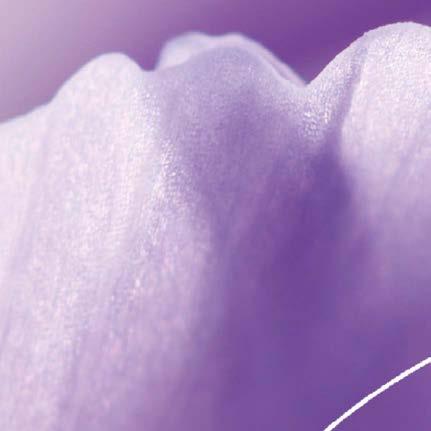






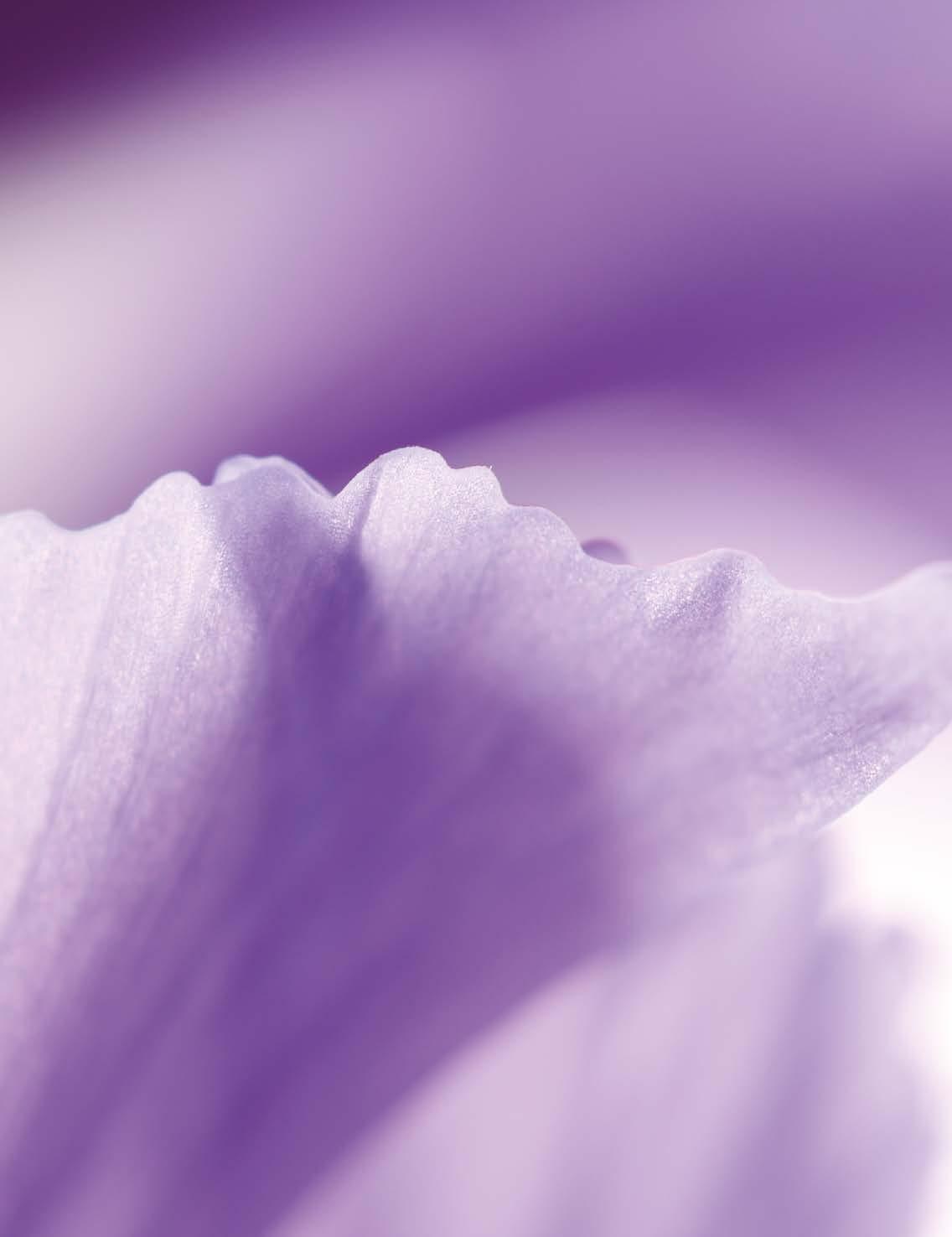
作者 / by: Jessica Mignot
坚果和谷物是香水中引入的全新 美食香调,而大米是其中典型的 低调但逐渐兴起的一大趋势。
蒸煮以配咸食,烹制以成甜点,发 酵以酿饮品 或含酒精,亦或 清饮;亦可烘烤入茶,或研磨成美 妆粉末 …… 大米展现出极强的多样 性,蕴藏着无尽的记忆潜力。正因 如此,它成为调香师的灵感源泉, 而香水调香师们也不断在与食品调 香师的交流中汲取养分。1983 年 的一项研究揭示了大米香气的标志 性分子之一:2- 乙酰基 -1- 吡咯啉, 它也是爆米花的香气特征。然而, 大米的香气远不止于此。
在煮熟的大米中,已鉴定出超过 300 种挥发性有机化合物,其中包 括多种醛类、醇类、酮类和吡嗪类 物质,它们共同构成了大米独特的 嗅觉特征。在不同的化合物比例下, 大米的香气可能呈现出果香、花香 或烘烤香等不同层次。对于无法直 接提取大米香气的调香师而言,这 些分析犹如一盏明灯,指引他们重 现这种多变的气味,赋予其多样的 嗅觉诠释:蒸汽香、奶香、烘烤香、 脂粉香、纯白感
在一些杏仁调的花香中,我们可以
捕捉到 “ 米香粉感 ” :香豆素、洋 茉莉醛与鸢尾的香气,这些曾经是
古代香粉增添韵味的原料,如今则 已成为调香师们创作中的默契搭 档。然而,若要更直接地还原煮熟 谷物的香气,则需要借助其他素材: 檀香乳脂般的温润,香根草中的榛 果、香草、麝香,乃至醛香,都会 为香气增添蒸汽般的漂浮感 而 最为关键的,则是吡嗪类物质,其 独特的 ‘ 烘烤 ’ 特质尤为突出。这 种特质在 Olivier Cresp 于 2005 年 为 KenzoKi 创作的 Rice Steam 中 尤为明显,他或许可被称为诠释米 香最忠实的鼻祖。尽管这款香水现 已停产,其中醛香与麝香的完美交 织,始终让人联想到印度香米蒸腾 的烟气。
米香调在品牌的众多作品中屡 见不鲜。例如 2006 年的 Kenzo Amour,以及近期推出的 ‘Memori’ 系列 其中的 Cœur azuki(倾 心蜜豆)、Nuit tatami(星夜榻榻 米)和 Poudre matcha(抹茶轻舞) 皆以米香为核心。此外,米香调在 以茶为主题的创作中也会被诠释: 日本煎茶与烘焙大米的结合 玄米茶,曾成为诸多作品的灵感 缪斯:梅森 马吉拉的 Tea Escape (2014)、Gri-Gri 的 Ukiyo-E(2016) 以及 Teo Cabanel 的 Je ne sais quoi (2020)。更具争议性的是那些以 味蕾作为灵感的作品:例如 État libre d'Orange 的 Fils de dieu, du
riz et des agrumes (2012)、凯利安 的 Moonlight in Heaven ( 2016 ) 以及 Borntostandout 的 Dirty Rice (2022)。然而,大米不仅是一种 食材,更是一种文化符号,它能重 现一方水土:例如阿蒂仙之香的 Chant de Camargue(2019),或 是 Giuseppe Imprezzabile 在其品 牌 Meo Fusciuni 的 Sogni(2023) 中对日本的追忆。这些创作无不表 明,无论是在香氛领域还是饮品世 界,大米还有着无限的可能。
Nuts and cereals are some of the all-new gourmand notes making their way into our bottles. Rice is a prime example of a discreet but emerging trend in perfumery.
Steamed to go with savory dishes, cooked in desserts, fermented to obtain beverages – alcoholic or not! –toasted in tea, or ground into powder for cosmetics… Rice is particularly versatile and offers many possibilities for remembering. In this sense, it is a source of inspiration for perfumers, nourished by their exchanges with flavorists. A study published in 1983 unveiled one of the signatures of the smell of rice: 2-Acetyl-1-pyrroline, which presents popcorn facets. But it can’t be summed up by it.
Over 300 types of volatile organic compounds have been identified in cooked rice, including different aldehydes, alcohols, ketones and pyrazines that all contribute to its olfactory signature. Depending on their proportion, the effect can be more or less fruity, floral or toasted. These analyses can guide perfumers who don’t have its extract in recreating its particularly polymorphous scent, which allows them varied olfactory interpretations:
vaporous, milky, toasted, powdery, white… A “rice powder” accord can also be detected in almondy orals: Here, heliotropin, coumarin and iris – which once scented powders–are perfumers’ best allies. But to evoke the cooked cereal more directly, other materials are used: Sandalwood for its milky facets, vetiver and its hazelnut accent, vanilla, musks or even aldehydes for the vaporous e ect… but above all, pyrazines, with their speci cally “roasted” pro le. The latter stand out in KenzoKi Rice Steam, created in 2005 by Olivier Cresp who is probably the father of the note, in its very literal interpretation. Now discontinued, the fragrance recalled the smoke rising from a cereal-like, aldehydic and musky basmati rice.
There are references to it in some of the brand’s other products, such as Kenzo Amour (2006), or more recently in the “Memori” collection, in which Cœur azuki, Nuit tatami and Poudre matcha feature the accord. It was, in fact, rediscovered in fragrances inspired by tea: Thus, Genmaicha, a Japanese blend with roasted rice, inspired Tea Escape (2014) by Maison Martin Margiela, Ukiyo-E (2016) by Gri-Gri, and Je ne sais quoi (2020) by Teo Cabanel. Perhaps more divisive, very foody inspirations also exist: Fils de dieu, du riz et des agrumes (2012) by État libre d’Orange, Moonlight in Heaven (2016) by Kilian Paris and Dirty Rice (2022) by Borntostandout. But because it is also cultural, rice can be a way of conjuring a landscape: that of L’Artisan parfumeur’s Chant de Camargue (2019), or Giuseppe Imprezzabile’s memories of Japan in Sogni (2023) for his brand Meo Fusciuni. As many creative paths that make us think that rice hasn’t said its last word in perfumery!
凯利安
Brand
Perfumer
Kilian Paris
Calice Becker
Launch 2016
凯卓
Brand
Perfumer
Kenzo
Karine Dubreuil-Sereni
Launch 2022
Opening on a mango sticky rice dessert, exotic notes segue into a radiant florality conjuring clean skin.
Rounded out by milky vanilla, strewn with fresh spices, this rice is powdery, particularly comfortable and warm.
Brand
阿蒂仙之香 L’Artisan parfumeur
Perfumer Alberto Morillas
Launch 2019
Borntostandout
Brand
Perfumer Olivier Cresp
Launch 2022
A poetic and naturalistic landscape painting in which salty winds carry the scent of rice and of surrounding flowers.
Kenzoki
The literal evocation of creamy basmati, this cloud of musky steam, slightly salty and woody, echoes the defunct Kenzoki.
PROFESSION
/ by: Alexis Toublanc
/ illustrations: Jeremy Perrodeau
香 的
调香创香师
调香师
调香分析师
调香师
原料控管师
调香
Contrary to popular belief, perfumers are not born, they are made. Most societies do not teach children to develop their olfactory memory, or encourage any particular curiosity in the world of aromas. Embarking on a career in perfumery means there is a lot of catching-up to do. The ability to nd words for the smells our noses detect, to know how to group them and even to pick up on nuances between them can only be gained through long and rigorous training.
Many perfumers arrive in their profession either somewhat by chance, or by an unconventional route. Nonetheless, the career pathways are better signposted now than they have been in the past, although there is no single way to learn the trade. First and foremost, remember that chemistry is an integral part of perfumery studies: It is therefore advisable to take sciences in secondary education. In France, after gaining school quali cations, there are two main routes open to the future apprentice perfumer:
• The university route, which involves a three-year degree in chemistry followed by a masters in formulation and evaluation;
• Going straight into a school that o ers a ve-year training program.
But, the journey isn’t over yet! These courses are your ticket into a point of entry into perfumery’s various industry operators, which are the composition companies that employ the majority of perfumers. These companies have their own schools where a handful of students follow an intensive training conducted by the company’s sta perfumers, before going on to join their ranks.
When we think of a perfumer, we tend to imagine that they only deal with acons of perfume. But a great many products we encounter in daily life are scented although we don’t even notice it, and each type of product, as diverse as they are, requires a speci c kind of expertise. There are also perfumers who focus less on creation and train instead in technical formulation. They are divided into:
Whatever product category they create for, one thing connects these perfumers: They deal with the formula. They may work for:
• Fine fragrance, encompassing eau de toilette and eau de parfum formulated with alcohol;
• Functional fragrance, which can be divided into di erent subcategories, such as body care products (soaps, shower gels, shampoos and cosmetics) and household products (laundry detergents, fabric softeners, cleaning products, dish soaps and air fresheners). Some perfumers work in several categories at the same time, especially within smaller companies.
Specialists in chromatography, they study various products on the market to assess the competition and therefore help perfumers in all categories to better harness the current trends and widen the scope of their inspiration.
Experts in raw materials, from sourcing to quality, their job is to expand the palette used by the laboratories they work with.
Specialists in adapting existing formulas, for instance when new products are added to a line (shower gels or soaps derived from a fragrance). They have to ensure the nal scent retains its olfactory character while also remaining stable and conforming to current legislation. They may also be required to rework formulas that are already on the market in order to adapt them to comply with new standards.
Each of these areas of expertise requires a particular skill set within formulation, and also evaluation.
This text is an excerpt of the book “The Big Book of Perfume,” published by Nez.

的 香 STAFF PERFUMER IN A COMPOSITION HOUSE

香 IN-HOUSE PERFUMER
调
Called upon for various projects for di erent brands, works to a brief and collaborates with multiple teams (evaluation, marketing, regulatory a airs, etc.).
Works exclusively for one brand, and becomes their own entity within that brand. Involved in formulation, but also the procurement of raw materials, PR, even the brand’s commercial strategy.

香 INDEPENDENT PERFUMER
Creates formulas for their own brand, or for others. Manages their business alone or with associates: administration, potential clients, formulation, client meetings, production and quality control.


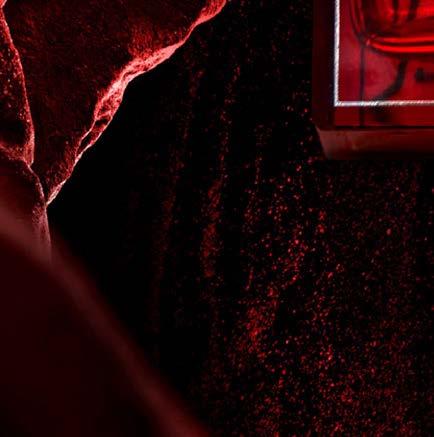










/ by: Patrice Revillard
香水 IS EAU DE PARFUM BETTER THAN EAU DE TOILETTE?
Not necessarily. It’s a question of
concentration rather than quality. An eau de toilette is usually less concentrated than an eau de parfum from the same range. In other words, it has a lower quantity of concentrate diluted in alcohol. And the formulas can be di erent, the lightness and freshness that usually characterizes eau de toilette contrasting with the intensity, tenacity and opulence of eau de parfum. Citrus fruits or fresh owers are therefore the logical choice in the former, whereas woods, balsam and heady owers are likely to take center stage in the latter. Some people enjoy the buoyancy, the fresher or more oral pro le of an eau de toilette, while others are attracted to the more vigorous and assertive character of eau de parfum. Ultimately, it’s a question of taste. Nowadays, the di erent concentrations of one product tend to deviate from each other, to the extent that they sometimes end up forming di erent compositions, in the vein of ankers. When it comes down to it, nothing is better for comparing di erent concentrations or nding out which one suits you best than testing them on your skin.
I
A perfume’s tenacity varies according to two factors: its concentration and its composition. The higher the concentration, the more tenacious the perfume. But only up to a certain limit, established so as to optimize the delicate balance between tenacity and olfactory e ect. Beyond this optimal concentration, the perfume becomes overloaded and is so concentrated that it begins to have the opposite e ect: The balance is broken, it loses its sillage and shine, sticks to the skin and stops di using. It’s almost like you can’t smell it anymore or, worse yet, it repels you! The composition is just as key to maintaining the perfume’s tenacity. Fresh notes of citrus fruits and owers are made up of light molecules that evaporate soon after the initial spray. In contrast, musks along with vanilla and amber notes, to name but a few, are heavier and therefore less volatile. An eau de cologne, for example, will not last until the end of the day. Which shouldn’t cause you any dismay. A perfume’s tenacity may be rooted in the desire for a certain aesthetic.
Some fragrances are grounded in a construction and concentration with the focus on lightness, delicacy and freshness, since that is their statement style. The beauty of a honeysuckle composition, subtle and eeting by de nition, lies in lightness alone. Which means it won’t be particularly tenacious, but no matter! The impact of its fragility and the emotions it arouses take precedence over tenacity. If the price to pay is having to spray yourself more than once during the day, don’t hold back, because nothing is more pleasant than reliving the freshness and sparkle of your newly sprayed perfume. The obsession with power and tenacity which has been reaching its peak in recent years has left little room for subtlety as clients become accustomed to strong scents. With the rise in perfume prices, consumers want their money’s worth. They are getting used to overpowering fragrances and demanding more of them. Professionals have clearly understood the message: a perfume needs to be strong and long-lasting! It’s as if “strong smell” equates to “expensive smell,” which means we now have to pick a perfume based not only on its scent, but also on its performance. However, bee ng up concentrations is not the solution to the problem, as it often triggers the phenomenon of familiarization. By wearing the same perfume every day, we assimilate it with our personal odor. Our brain becomes accustomed to it and no longer notices it, ensuring that it doesn’t get swamped by the smell. The secret to counteracting this natural acclimatization is to change your perfume as often as possible.
香水 PERFUMES ARE CHEMICAL, SO THEY’RE BAD FOR YOUR HEALTH.
The term “chemical” often has negative connotations since it is associated with that which is arti cial
and dangerous. However, from how our bodies function to the food we eat, our entire existence is governed by chemistry – and without it there would be no life. Chemistry is also what enables plants to produce their nutrients, pigments and aromatic molecules. A natural plant extract is therefore just as “chemical” as a molecule produced synthetically in a laboratory. Consumers, who equate natural products with safety, tend to worry about the materials that are known as synthetic and often mistakenly described as chemical. Even though the most powerful poisons come from nature! The molecules produced in a laboratory can occur naturally in plants, for example. It is also important to know that a natural extract is a cocktail of several hundred di erent molecules. Some of them are corrosive, others photosensitizing or irritant. Even though they are contained in a naturally-sourced essential oil, they can trigger an allergic reaction in people who are susceptible. Perfumers also use other molecules known as “arti cial” and not found in nature. A wholly human invention, they are exhaustively analyzed and tested before being launched on the market to ensure they are totally harmless. These molecules are banned on the slightest suspicion of a health or environmental risk. A host of European and international bodies impose and regularly revise norms and directives to ensure that perfumes sold on the market are safe. A raw material’s quality or harmfulness is not determined by its origin, whether natural or synthetic.
You’ve decided to change your perfume, or want to give someone perfume as a gift. Gazing blankly, you cruise the well-stocked shelves of a perfumery. You quickly sink into a state of confusion with no real idea of what you’re looking for. The signs proclaiming new arrival, exclusive and bestseller aren’t making your task any easier. So you make what seems a logical decision: “I’ll be guided by the bestsellers, because if it sells it must be good!” Although a handful of excellent classics are included among the bestselling fragrances, it’s because their reputations have been maintained by the brands’ extensive promotional campaigns (No 5 by Chanel, Eau sauvage by Christian Dior) or built on word-of-mouth success that has gradually given them a place among the top sellers (Angel by Mugler). But their presence in the hit-parade is increasingly under attack by the new products launched on the back of aggressive advertising campaigns and extensive consumer testing. These panels of untrained people, representing potential buyers, smell the perfumes in a blind test and state which ones they prefer. Unsurprisingly, the consumers usually give the highest marks to the most sugary, gourmand and powerful scents, and, especially, the most familiar, which means they are similar to current bestsellers. We always prefer what we know. Thanks to these results, brands establish statistics to calibrate packaging, scent and advertising as closely as possible to what the consumer
wants, likes and buys. Calibrate is the word that best sums up this product development method, where there is no place for innovation or, especially, risk-taking. So much for bestseller equating to top quality. The best way to choose a perfume is to give free rein to your desires and tastes. So take the time to test fragrances that appeal to you on your skin without letting yourself be in uenced by a sign on a shelf!
Natural raw materials are lovely, expressive and precious – but they can’t do all the work by themselves! Perfumery is an art created with the help of a very broad and varied palette, encompassing natural raw materials (essential oils, absolutes, balsams, etc.) and synthetic raw materials. These syntheticallyproduced molecules, which either occur naturally (limonene in orange, geraniol in rose) or are invented (Ambroxan, ethylvanillin, Galaxolide), o er an olfactory abundance and diversity equal to natural ingredients. And it is thanks to them that perfumery has taken on a whole new dimension over the last hundred years or so and seen its popularity soar. Natural extracts, as rare and precious as they are,
consist of complex mixtures of aromatic molecules whose results sometimes di er greatly from the natural aroma of the plant, as well as being unappealing and hard to wear as is. The fault lies with extraction techniques, which can harm the primary raw materials when extricating their essence. Perfumers use synthetic molecules to work on, shape and hone natural ingredients as they seek to create as faithfully as possible a result which natural essences cannot reproduce alone and to invent new olfactory forms. These same synthetic ingredients also magnify tenacity and persistence and multiply olfactory e ects by signi cantly expanding the perfumer’s palette with the addition of new materials, in the same way as painters might when new hues are added to their color chart. They can be more costly than certain natural materials; Ambroxan, for instance, is 50 times more expensive than orange essence. And more than one iconic creation would never have seen the light of day without them, including No 5, Shalimar, Acqua di Giò and L’Eau d’Issey. While it is possible to create a 100% natural fragrance, it is very hard to obtain a satisfactory result in terms of price, tenacity and appearance. One hundred percent synthetic perfumes, on the other hand, can smell good, but will always lack that little something that only natural ingredients can bring to a composition: a vibration, a variation which gives the fragrance so much more soul. Good quality perfumes are therefore a happy balance of natural products and synthetic materials which dovetail to express an idea and convey emotions.
This text is an excerpt of the book “The Big Book of Perfume,” published by Nez.







香水甄选 PERFUMES P.60
作者 / Reviews by:
Sarah Bouasse
Cécile Clouet
Aurélie Dematons
Samuel Douillet
Clara Muller
Clément Paradis
Alexis Toublanc
书籍甄选 BOOKS P.67
Brand Celine
Perfumer Unknown
Type 香 Eau de parfum
Price €340/200ml
香
Transitional perfume
Céline 香
Hedi Slimane
——Françoise
Sagan Jean Seberg
Zouzou
香调 香 香
香
香 香 Guerlain, Shalimar
香 香 香
Zouzou 香 A.D.
The new Celine, conceived by Hedi Slimane, draws its inspiration from Sixties icons like Françoise Sagan and Jean Seberg, in a tribute to their timeless Parisian elegance tinged with rebellion. Zouzou is an exotic explosion of vanilla, a plump pod bathing in hot milk and caramel, conjuring the sweetness of childhood. Soon, the fragrance evolves toward a sophisticated accord of amber and leathery musk, whose almost feline depth recalls the carnal character of Shalimar by Guerlain. Patchouli, benzoin and tonka bean add a vintage patina to the note. A genuine bridge between contemporary addiction and nostalgia for the 1960s, Zouzou can be worn as a transitional comforter, marking the delicate passage between childhood and femininity, in which each note recounts the awakening of a more mature sensuality. A.D.
Brand D’Orsay
Perfumer Jordi Fernández
Type 香 Extrait de parfum
Price €180/50ml, €240/90ml
D’Orsay has added a new collection of three extraits de parfum to its range, including this plump and curvy Tonka Hysteria. An explosion of pink pepper and mandarin in the top notes melds with iris and cinnamon, in a quasigustatory evocation of boozy, candied plum. Soon, tonka bean shows up in a powdery-almondy, delightfully ample swirl. A comforting cloud settles around you, a creamy halo that irts with gourmandise without ever giving in to it. Over the hours, vanilla and benzoin stretch out and seem to warm the skin. A ne-threaded cashmere matches softness and elegance, impeccable drape and simplicity, in an addictively tender balancing act. C.C.
Brand Serge Lutens
Perfumer Christopher Sheldrake
Type 香 Eau de parfum
Price €142/100ml
After the countless gradations of darkness from the great sorcerer of perfumery, here is a new iteration of the “Matin Lutens” collection, whose intention seems to be to get us to rise at dawn to splash ourselves with it. And what could be more invigorating than a bouquet garni of fresh, herbaceous aromatic herbs? Crumple a little thyme, sage, rosemary and eucalyptus between your ngers, mix them vigorously, add a small sprinkle of the house’s signature accord – incense, pepper and various woods –and you’ll be set for a new, promising dawn: waking up with Serge Lutens. If the house’s hallmark is a blend of woods, spices and candied fruits, Point du jour surprises by its vivifying freshness, especially in an olfactory landscape obsessed with power. S.D.
Brand 香 L’Artisan parfumeur
Perfumer Caroline Dumur
T ype 香 Eau de parfum
Price €185/100ml 香
Caroline Dumur 香
When a fragrance has the good taste of announcing itself without an outrageous adjective followed by “extreme,” the least we can do is to cast an attentive nostril. This fairy tale authored by Caroline Dumur leads us into the woods… But which ones? There’s cedar, a faraway sandalwood, without forgetting a root, vetiver, which appears in the very rst seconds. And in these thickets, a cottage is preparing a feast. It gives o cracked pepper, a dry accord of roasted sesame or buckwheat that’s trending these days (the famous pyrazines), as well as balsamic notes of almond and tonka bean, gourmand but not sticky. These powdery facets remind us of one of the jewels of L’Artisan’s catalogue, Bois farine, revisited with a few strokes of Timbuktu. A story that continues to unfold graciously. C.P. Morning thyme
Bois farine
Timbuktu
C.P.
Brand Cartier
Perfumer Mathilde Laurent
Type 香 Eau de toilette
Price €270/75 ml
Mathilde Laurent A.T.
It is the scent of April: an almondy smell with accents of clove and vanilla, all at once vegetal, rosy and with a slightly animalic in ection. Soon, you’ll recognize it: It’s the lilac signature of spring. The opening is green and incisive, the grass more cutting than cut; the juicy e ects of apple and pear are tart. A swirl of wet earth takes us by surprise, giving us the impression of a lilac tree caught in a storm, when rain rages and winds make the bunches of owers waltz, exalting their facets of cinnamon, heliotrope and honey. The ower’s animalic note then roars until it reaches a musky base wavering between earth and fruit. This is no airy, delicate breeze. Nature, for Mathilde Laurent, is intense, passionate and luxurious; its vision is raw, wild and unchained. A.T.
Brand Byredo
Perfumer Jérôme Epinette
Type 香 Eau de parfum
Price €165/50 ml, €240/100 ml
Frank Voelkl Le Labo Santal 33
C.P.
In late 2024, it seems unthinkable for a niche brand not to have among its o erings a descendant of Frank Voelkl’s Santal 33 for Le Labo, that is, a fragrance built around a woody accord of sandalwood and chic, dry cedar, water-painted with a few oral notes and transparent musks, introduced by a fashionably spicy opening. Now it’s Byredo’s turn to revisit it with incisive pepper notes and the inevitable cardamom. Yet this verdancy takes on a new aspect when it is blended with the phenolic smell of ink and a smidge of coriander, before warmth returns through a few rose petals. The lactonic e ects that stretch out the woods aren’t unpleasant, and the result doesn’t strike a wrong note, but all this is wise when you consider its price point… We’ve known Byredo to be bolder! C.P.
Brand 香 Parfum d’empire
Perfumer Marc-Antoine Corticchiato
Type 香 Eau de parfum
Price €130/50ml, €190/100ml
Sun-kissed owers
S.D.
If your skin yearns for the sun, or if you’re just waxing nostalgic for a beach romance, put your nose on this new Parfum d’empire. Though it was inspired by a “sea, sex and sun” décor, the scent doesn’t surf on the wave of monoï perfumes. Instead, you will nd, after a whi of singular, even slightly animalic spices, a grand bouquet of creamy white owers. Magnolia and its yellow fruit freshness, lush velvety gardenia and champaca with its reminiscence of hay are wrapped in naturalistic green foliage. The trio is bolstered by jasmine and ylang-ylang, accenting the bouquet’s spicy oral maximalism. A generous and solar composition! S.D.
Brand 香 Éditions Frédéric Malle
Perfumer Suzy Le Helley
Type 香 Eau de parfum
Price €330/100ml
Frédéric Malle
Acne Studios Suzy Le
Helley
For once, Frédéric Malle’s latest creation was born from a brief: to bottle Acne Studios. Here, Suzy LeHelley makes a remarkable entrance in the publisher’s roster by capturing the spirit of the Swedish fashion brand – a clever mix of streamlined basics and o eat o erings – in an impeccably cut fragrance. A grand, aldehydic opening, as crisp as the air blown out from the dry cleaner’s, slowly unveils a tender heart of rose, violet and orange blossom, rounded out with a lick of vanilla. The oral ambery note could be classical if it weren’t melded into a very modern cloud of dense, potent white musks, to which a peach note adds delicious functional accents, between detergent and shampoo. An original, easy-to-wear piece: in sum, the ideal. S.B.
Brand Tom Ford
Perfumer Shyamala Maisondieu
Type 香 Eau de parfum
Price €150/50ml, €210/100ml
香
Shyamala Maisondieu
香调
香
调 香 香调
香调
香
香
香
香 2017 香
香
C.P
According to the legend, oud wood drifted to Japan in the sea, and was pulled out of sand and salt by shermen. Was it what led Shyamala Maisondieu to work on the note in such an unconventional manner? In any case, it is a sea breeze that greets us, before the woody, peaty accord of the heart announces itself. It is edged in something peppery, re ections of the now-fashionable r balsam, balanced with the warmth of styrax which unfolds its leathery, warm, animalic and spicy world. Originally sold in the brand’s “Private Blend” collection, this 2017 formula hasn’t aged a day; it even reveals a certain prescience of the contemporary developments of perfumery, arising from an inky sea. C.P.
Brand Prada
Perfumer Daniela Andrier
Type 香 Eau de parfum
Price €160/100ml
Daniela Andrier NEZ
This year, it is an uplifting and radiant accord between two subterranean materials – ginger and vetiver –that completes Prada’s “Infusions” range. A bitter green, citrusy harmony is the sunny prelude to the composition. This overture, with its cologne sprightliness, exalts the freshest, most piquant, lemony, almost mouthwatering facets of the eponymous rhizome. Through a few slightly soapy notes, faithful to the style of the collection, vetiver soon shows the tip of its roots, shooting through the fragrance with its light, direct woodiness. “Speaking, without crushing those around you: That is, in my view, an essential quality of perfume,” says Daniela Andrier. This is exactly what this infusion achieves, in the simple, limpid style that is the perfumer’s hallmark. C.M.
C.M.

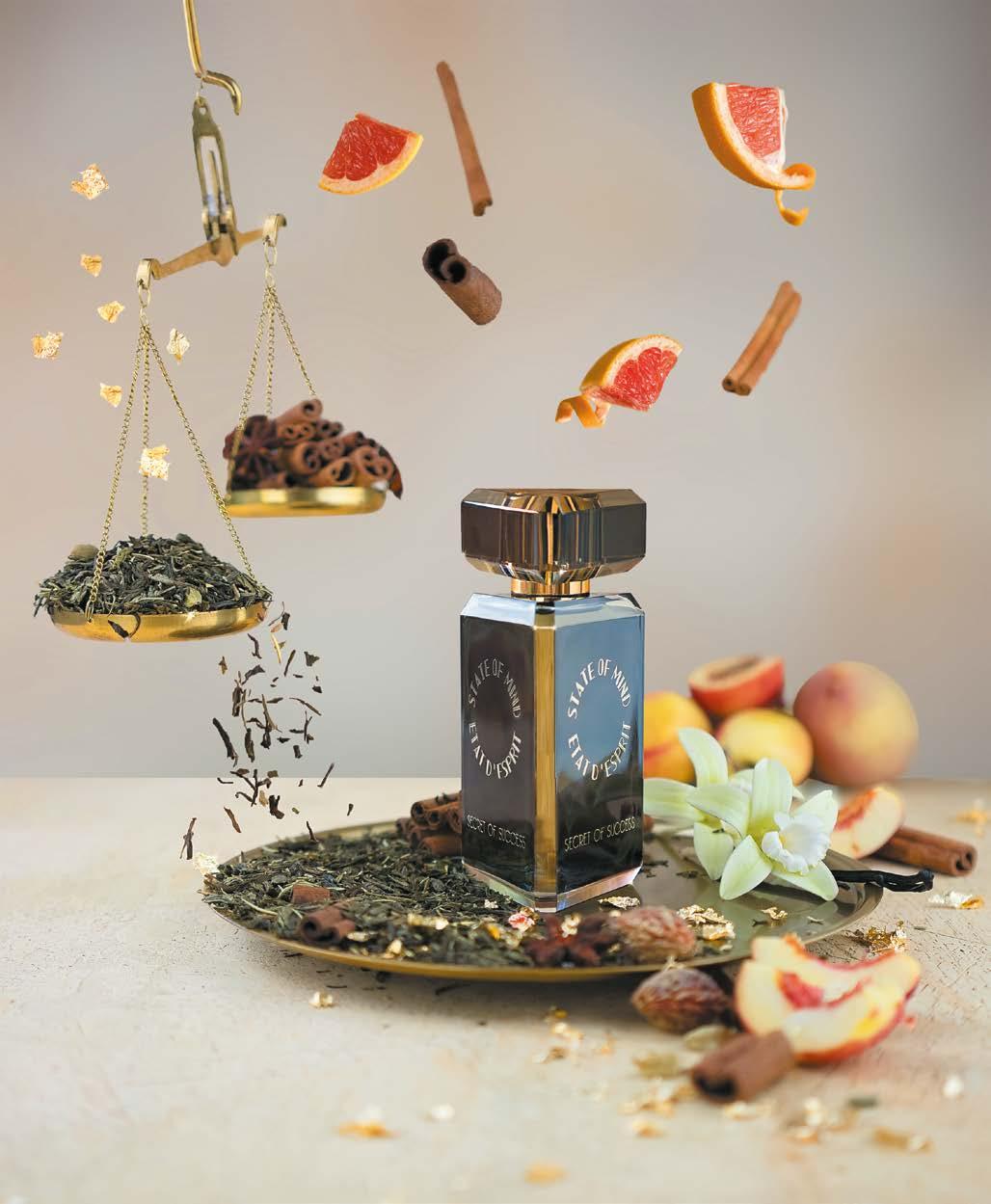
STATE OF MIND, Versailles, France. www.stateofmind.fr
By Jeanne Doré, Yohan Cervi, Alexis Toublanc
and Nez, the Olfactory Cultural Movement. China Publishing Group Co., Ltd. People’s Literature Publishing House, 2023, 272 pages, 88.00 RMB. Also available in French.
130 香 Nez 111
2017 Jicky 1889 Tabac Tabou 2015
Far from just a simple list, this reference guide takes readers on a journey through perfume history, spanning 130 years of scent creations. The members of Nez wanted to highlight the 111 perfumes that matter, be they iconic, celebrated, unknown, bestsellers or extinct. This new edition has a chapter devoted to extinct perfumes, while also presenting new creations launched since 2017. From Jicky (1889) to Tabac tabou (2015), this subjective and fanatical selection is organized into seven periods that marked the biggest transformations of the industry. These texts, sensitive, peculiar and informative, are aimed at experts, connoisseurs, young enthusiasts and the uninitiated alike. The 111 Perfumes You Must Smell Before You Die undeniably contributes to the highly anticipated arrival of a demanding and accessible olfactory culture, essential to better smell and feel the world around us.
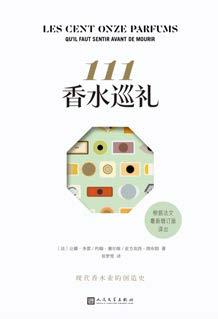



CS-BOOKY
Under the direction of Jeanne Doré. By Nez, the Olfactory Cultural Movement. CS-Booky, Hunan Literature and Art Publishing House, CNS Publishing Media, 2023, 314 pages, 88.00 Also available in French, English and many other languages.


For many people the world of perfume is still shrouded in mystery, but this work reveals hitherto unknown aspects of the industry, taking an informative approach, combining historical, scienti c and aesthetic aspects. A reference work in France, the book is now available in China. The global perfume industry is worth 45 billion dollars, and each year around 2,000 new fragrances are launched worldwide. However, aside from often super cial and reductive communications, the perfume industry has long enjoyed keeping secrets. What are perfumes composed of? Who are the perfumers behind these fragrances? What happens between the conception of an idea and the arrival of a new bottle on the shelves? What di erences are there between a popular brand distributed on a large scale and a smaller company whose products are only available in a handful of stores? Once a perfume is launched, how does it survive the test of time? For the rst time, a book answers the questions you have never dared to ask.
Under the direction of Jeanne Doré. By Nez, the Olfactory Cultural Movement + SIMPPAR. Citic Press, 2025, 118.00 Also available in a bilingual French-English edition.
“Creating a beautiful perfume requires good ingredients.” From Sicily to Laos, Paraguay to Madagascar, this book takes you on an incredible olfactory journey for a series of fascinating encounters with perfume plants, the producers who create fragrance essences, extracts and molecules, the perfumers who use them, and the iconic compositions in which you will nd them. Vanilla, jasmine, bergamot, musks... This volume explores the diversity and richness of perfumery ingredients: their origins, cultivation, transformation and usage, as well as the innovations devised to address the environmental, economic and social challenges of today. The International Exhibition of Raw Materials for Perfumery (SIMPPAR) teamed up with Nez to pay tribute to the people whose expertise sustains a sector that is all too often overlooked.
Déborah Druba
These editions are published by arrangement with Nez in conjunction with its duly appointed agent Déborah Druba, Paris, France.
by �e�
和香研习所: 重塑传统 VILLA HARMONY: REIMAGINING TRADITION P.72

作者 / by: Éléonore de Bonneval 摄影 / photos: DSM-Firmenich
和香研习所 Villa Harmony 为帝斯曼 -芬美意与薰席所携手共创的合作项 目,以重塑精湛工艺与振兴中国香气 文化为宗旨,汇聚国际香氛领域专家 与传统香气工艺研究团队,秉持科技 与文化融合创新的理念,在天然芳香 原料发掘、植物文化溯源、工艺配方 创新等板块开展深度共创,积极探索 中国香创新性发展与全球性转化新路 径,为国际品牌及本土品牌提供既有 全球视野又扎根本土的在地创香解决 方案。
坐落于上海金泽古镇的和香研习所是 一个特殊的创香与创新研究项目。帝 斯曼-芬美意亚太区高级香水香氛副 总裁 Olivier Viejo ,与根植于中国香 气的跨学科创新与研究机构“薰席所” 创始人马溪芮展开深度对话,双方共 同探讨这一联合项目的独特价值在为 本土及国际客户打造深度融合的文化 体验及创香灵感启迪场域。
和香研习所的概念如何产生? OV:为了支持中国业务的长期可持 续和发展,五年前,帝斯曼-芬美意 在上海开设了一个新的创意中心The Atelier。我们拥有一支专业的跨职能
团队,支持本士品牌香水开发,并帮 助国际品牌了解中国消费者。2023 年,我们认为和香研习所是一个创造 新市场模式的机会,这个模式把中国 原料、香文化历史和传统智慧与现代 香水提供的可能性结合起来。
你们能描述一下这个空间吗? 溪芮: 在北京7年之后,我们决定把 薰席所搬到上海,并有幸能迁至聚 集了众多工匠工作的金泽工艺社中。 2023 年我们与帝斯曼-芬美意合作 成立“和香研习所”,整个空间占地 约 4.000 平方米,并划分为多个独 立的房间,每个房间根据我们的研究 重点承担着着特定的功能:从展厅到 传统合香工坊、品香空间、文献室和 茶室,以及双方共创的实验室,芳香 主题的中式园林等。
植物在这个项目中有何重要性? 溪芮:金泽工艺社在设计之初就打造 了一个江南传统园林。我们搬来之前, 梅花、辛夷等这些在中国有重要意义 的植物就已经种植在这里了。2019 年搬到这里以后,我们种植了更多植 物,并在过程中陆续增种,以支持我 们的合作研究项目,更好地将传统原
料转化为现化香水应用。
你们能介绍一下帝斯曼-芬美意和薰 席所之间的一个合作项目吗?
OV:我们挑选出了12种生长在 和香研习所花园中的植物,通过 NaturePrint芬馨拓印™ 技术(也称 为“headspaces”)萃取它们的香 气分子,并深入挖掘其嗅觉潜力。这 一过程中,我们不仅得益于中国本地 高级香水调香师郭斯亮的深度参与, 还邀请到三位国际调香大师如Frank Voelkl、Daphné Bugey和Coralie Spicher的来访并优化配方。例如艾 草这一植物原料的研发成果已成功赢 得客户青睐并应用于其香水之中。 溪芮:我们合作创作的过程中最有趣 的一个环节是收集植物的气点,就像 我们在嗅闻鲜活的植物的气味一样。
我们和帝斯曼-芬美意一起深度合作 了所有的开发阶段:确定分析样本批 次、解读实验室数据、验证最终香气 呈现。这一过程中,薰席所的综合能 力被全面调用,涵盖咨询、文化研究、 香气与学术支持等维度。
中国的焚香是研究的主要专题之一, 它怎么能变成一种灵感来源呢?
溪芮: 2000多年前,异域香料已 通过贸易进入中国,与本土香料形 成互补。中国古代典籍中丰富地记 载了这些香原料的起源、来源、应 用和配方。比如宋代的《香谱》中 记载了290多个古代香方,涉及到 300多种香料和辅料。炮制工艺的 不同也会使得香原料呈现出不同的 气味切面,譬如檀木经过不同的方 法炮制,可呈现青草般清新、牛乳 般香甜、梨子般甘美以及陈化发酵 气息等不同的气味特征。这些承载 着时间厚度的工艺体系,为现代香 水创作提供了极其丰沛的灵感来源。
是为什么呢?
溪芮: 在中国传统制香工艺中,茶 作为辅助材料发挥着重要的作用, 然而古代中国茶叶生产和饮茶的方 式与今天截然不同。因此我们的研 究也包含了古代的制茶工艺,比如 宋代的蜡茶和团饼。它们会为中国 传统制香工艺带来独特的香气,我 们专注于捕捉这些香气并启发现代 实践。
你们正在探索其他研究领域吗? OV:用于中医药的香原料也是我们 两个团队的重要研究领域。我们正 在紧密合作,以更好地了触中医药 材原料的香气和功效。我们还对中 医使用的传统提取方法感兴趣,这 些方法可能会影响中医药植物的气 味特征,从而为调香师提供灵感。
你们对和香研习所有什么愿景? OV: 和香研习所作为一个创新之地, 用于开发新机会、重新审视中国本 土原料并连接传统与现代概念。如 果我们在这里创造的成果能够全部 付诸实际应用,那将是非常美妙的。
溪芮: 我希望和香研习所能够成为 传统与现代、东方和西方之间的桥 梁。我们应该珍视我们丰富的历史, 并促进和合共生的协同创新。
villa harmony, a collaboration between dsm-firmenich and xunlab, is a dedicated creation and inspiration project to revamp chinese scent and traditional perfumery. With global perfumery experts teaming up with traditional scent scholars, the project aims to empower innovation with culture, introducing new capabilities in natural ingredients, fragrance design and product innovation. The project is turning to a new chapter in the discovery of natural aromatic ingredients, botanical cultural tracing and fragrance design. Villa Harmony actively explores new pathways for the innovative development and global application of Chinese fragrances, providing both international and local brands with creative fragrance solutions that have a global perspective while being deeply rooted in local traditions. Olivier Viejo, VP of DSM-Firmenich Fine Fragrance Asia, converses with Ma Xirui, founder of Xunlab, an interdisciplinary research and innovation institution rooted in China’s rich fragrance heritage and traditions. Together they explore the potential of this co-designed space.
How did the concept of Villa Harmony come about?
olivier viejo To support the longterm sustainability of our ongoing operations in China, DSM-Firmenich opened a new creative center in Shanghai five years ago: The Atelier. With a dedicated cross-functional team, we support local brands developing fragrances and international ones with consumer insight, and market understanding. In 2023, we saw Villa Harmony as the opportunity to create a new model where we could link the ancestral understanding and heritage of the Chinese ingredients and usages with all the possibilities that modern perfumery provides.
Can you describe the place?
ma xirui After spending seven years in Beijing, we decided to move Xunlab to Shanghai, as we had the privilege to relocate to the heart of the Jinze Art Center, where countless artisans worked. Having partnered with DSM-Firmenich in 2023, we named our collaborative space Villa Harmony: a 4,000 square-meter house, organized into distinct rooms, each serving a specific function in line with our research focus. From exhibition halls to a traditional incense workshop, fragrance evaluation space, library for research and scholars, tea house for exchanges and discussion, co-creation lab between our two companies to facilitate experimentation, and a garden.
What is the importance given to the plants at Villa Harmony?
m.x.r. The Jinze Art Center was designed integrating traditional Chinese gardens all around the buildings, and before we moved there, plants like plum and magnolia trees, which have very important cultural significance, were already present. In 2019, as we joined, we added to the gardens in a way that supported our collaborative research project. We don’t cultivate to harvest but exclusively to define how to best translate the traditional Chinese scents and fragrances into modern perfumery applications.
Can you share a co-creation project run between DSM-Firmenich and Xunlab?
o.v. We identified 12 ingredients that we set out to explore for their olfactory potential in the gardens of Villa Harmony. We used our NaturePrint technology, also known as “headspace,” to extract their scents. We also benefited from the insights of our locallybased fine fragrance perfumer, Steve
Guo, and the visits of Frank Voelkl, Daphné Bugey and Coralie Spicher, who re ned them. Wormwood is one of these ingredients and has already won over a customer of ours who launched a fragrance featuring it.
M.X.R.One of the most interesting parts of our co-creation process was to capture the botanic breath of the ower, as if we were smelling the living plants. We were intrinsically involved in all steps of the process with DSM-Firmenich: de ning the batch of the samples to analyze, reviewing the lab analysis and validating the nal olfactory interpretation. All of our expertise was called upon, including cultural knowledge, olfactory knowhow and academic research.
Chinese incense is a primary focus. How inspirational can it be?
M.X.R.Over 2,000 years ago, foreign spices began entering China through trade to complement native Chinese aromatics. Ancient texts extensively document the origins, sources, applications and formulations of those scented materials. For instance, the Xiangpu (Incense Manual) from the Song Dynasty (960–1279) records over 290 formulations involving more than 300 types of aromatics and auxiliary materials. Process and re nement techniques described may also impact the scent of a material. Sandalwood, for example, can develop a fresh, grassy scent, a rich, milky aroma, a pear-like fragrance, or a deep, aged, fermented character. These timehonored methods provide a wealth of creative inspiration to modern perfumery.
You have been conducting research on tea. Why is this?
M.X.R.Tea plays an important role as an auxiliary material in traditional Chinese incense-making, but the processes involved in tea production
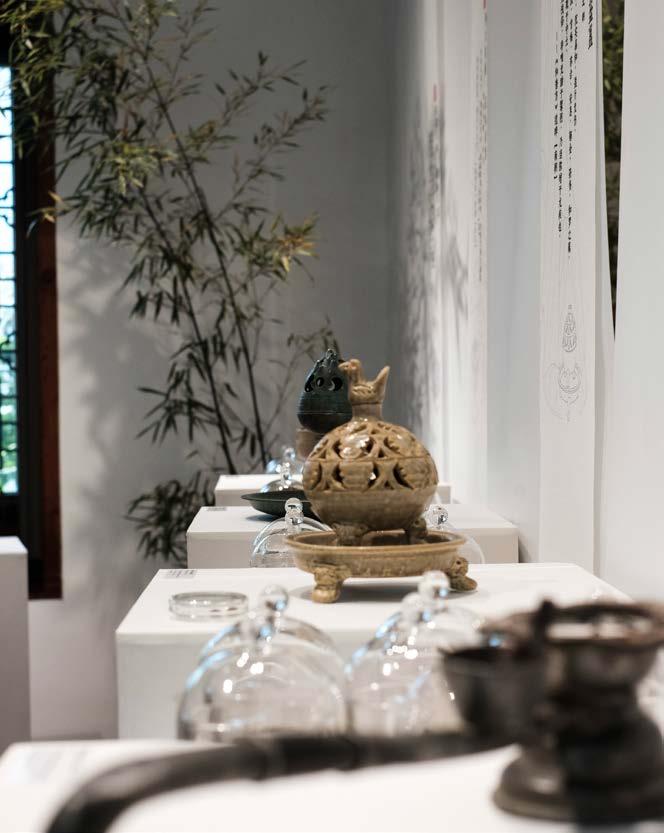
and tea-drinking in ancient China were quite di erent from those of today. Consequently, our research integrates ancient tea-making methods, such as the wax tea and compressed tea of the Song Dynasty. This leads to unique scents, with our focus being to capture them and to inspire modern practices.
Are there any other areas of research you are exploring?
O.V. Traditional Chinese Medicine (TCM) is an important eld of research for both of our teams. We are working very closely to better understand the olfactive and cosmetic properties of the raw materials used in TCM. We also look at the traditional extraction methods that are carried out and could
have an impact on the olfactive pro les of the TCM plants to inspire perfumers.
What are your biggest dreams for Villa Harmony?
O.V. This place serves as an incubator for developing new opportunities, revisiting Chinese ingredients and bridging tradition and modern concepts. Implementing everything we create here would be truly wonderful!
M.X.R.I hope Villa Harmony can serve as a bridge between the ancient and the modern, as well as between the East and the West. I believe we should celebrate our rich history and see how we can innovate together in harmony and symbiosis.

the olfactory cultural movement is also…

Nez littérature
• Aphorisms of a Perfumer, Dominique Ropion (fr, en)
• The Sense of Scent, Mathilde Laurent (fr, en)
• A Scented Journey, Carlos Benaïm (fr, en)
Nez, the olfactory magazine
Every 6 months a new issue of Nez serves up a slice of worldwide olfactory culture (fr, en)


的 FOR THE EARS AS WELL AS THE NOSE

Nez culture
• 香
The Big Book of Perfume (fr, en)
• Sentir, ressentir. Parfumeurs, odeurs et émotions (fr, en)
One-off publications
• We Love Fragrances. How Fragrance Is a Safe and Essential Part of Life (en)
• From Plant to Essence (fr, en)
Podcasts by Nez
Smell Talks
Les Grands Entretiens
Parole de marque 1+1
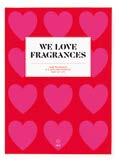

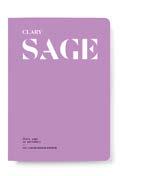

Nez Naturals noteboo
AN
upar u auparfum.bynez.com
Reviews, news, selections, interviews and more
a b Nez mag.bynez.com
Perfumery, science, history, the arts, special reports, events and more
香水 1+1
AN EXCLUSIVE PERFUME COLLECTION
Hongkong Oolong, Maurice Roucel + Alan Chan Folia, Julien Rasquinet + Eva Jospin Ambre à lèvres, Mathilde Bijaoui + Marjane Satrapi Kraft gommé, Marie Salamagne + Woodkid Le Lac, Annick Menardo + Angelin Preljocaj In the Arboretum Violaine Collas + Sopheap Pich Adorem, Fabrice Pellegrin + Akrame Benallal Armoressence, Nicolas Beaulieu + Jeanne Vicerial
的 AN AGENCY SPECIALIZING IN OLFACTORY
e ureau ol acti
Consultancy and guidance, expert content, training and education, global design, digital and video, photography, publishing, etc.
香水 aris er u e ee arc -
香水 rasse er u e ee ul -
The concept store for olfactory culture shop.bynez.com


Esxence Milan, 2026
Nez has created a network of partners to promote olfactory culture. You can nd us throughout the world, year-round.

Barcelona Perfumery Congress Barcelona, June 18-19, 2025

Beautyworld Middle East Dubai, Oct. 27-29, 2025

Congrès olfaction & perspectives, Mar. 19, 2026
Cosmetic 360 Paris, Oct. 15-16, 2025

Fragrance Innovation Summit Paris, Nov. 26, 2025

Notes Shanghai Shanghai, March 27–30, 2025
Grasse Perfume Week by Nez Grasse, July 2-5, 2025

IFEAT
Gothenburg, Sept. 14-18, 2025
Paris Perfume Week by Nez
Paris, Mar. 20 – 23, 2025

Pitti Fragranze Florence, Sept. 12-14, 2025

Rives de la beauté
Paris
ScentXplore New York, 2025
IFRA Singapore, Oct. 15-16, 2025

Institute for Art and Olfaction Art and Olfaction Awards
Los Angeles, May 29, 2025

Simppar Paris, June 4–5, 2025

World Perfumery Congress
Geneva
Publishing directors
Dominique Brunel, Mathieu Chévara, Jeanne Doré
Art direction
Marge Design
Editor in Chief
Jeanne Doré jdore@bynez.com
+33 1 48 06 20 68
Coordination
Arielle Lauze
Sub-editor
Jessica A. Volz
Lee Zhenghao Yu
Translators
Denyse Beaulieu
Philippa Bowe
Cécile Labarde
Emilie Zhou
香
Perfume reviews by
Sarah Bouasse
Cécile Clouet
Aurélie Dematons
Samuel Douillet
Clara Muller
Clément Paradis
Alexis Toublanc
Production manager
Rose Malkin
Graphic design
Marge Design, Isabelle Gavalda
Advertising, international distribution
Dominique Brunel dbrunel@bynez.com
+33 6 43 75 73 48
Jade Prudent jprudent@bynez.com
+33 1 48 06 20 68
Press relations
Lucile Rives lrives@bynez.com
+33 6 18 62 61 03
Publisher Nez
29, rue des Orteaux 75020 Paris
Nez in China www.bynez.com nezlarevue nezlarevue
With thanks to…
Liana Baltzer, Catherine Dolisi, Déborah Druba, Isabelle Gavalda, Judith Gross, Aurélie Keller, Camille Le Gall, Alex Wu, Li Jing, Gail, Pegella Huang
All rights reserved worldwide. Reproduction, translation and adaptation, in whole or in part, without prior written permission is strictly forbidden. Involuntary errors or omissions which may have occurred, despite the e orts of the editorial team, in the contents of this magazine will not engage the responsibility of the publisher.
Printed in March 2025.
�e� in China 1 是由 Nez 团队发行的读物。此刊为免费半年刊, 以英文和中文双语出版,为读者开启通往香水世界的艺术之门。
�e� in China 1 is a magazine published by Nez. It is free and comes out twice a year in English and Chinese, opening wide the door to the captivating world of perfumery.
香原料 RAW MATERIALS
植物剖析 ANATOMY 木兰
Magnolia
关键要素 KEY FACTS 中国的木兰
Magnolia in China
木兰种植园 的365天 365 days in the magnolia plantations
香水中的木兰 Magnolia in fragrances
一场调香师 与木兰的邂逅
A PERFUMER’S ENCOUNTER WITH MAGNOLIA
卡洛斯·贝纳伊姆 Carlos Benaim
植物档案 THE HERBARIUM
茴香
Anise
瓦迪道卡, 阿曼的格拉斯
In Wadi Dawkah, the Omani Grasse
甄选 SELECTION
香水&书籍
Perfumes & books

香水资讯
PERFUME PAGES
忠于自我的艺术 THE ART OF STAYING YOURSELF 别样公司
The Different Company
香水瓶中的大米 Rice in bottles
调香师的不同职业
The perfumer’s profession
疑问与成见
Questions and preconceptions
和香研习所 VILLA HARMONY
重塑传统 Reimagining tradition
bynez.com nezlarevue nezlarevue Complimentary copy; not for resale.